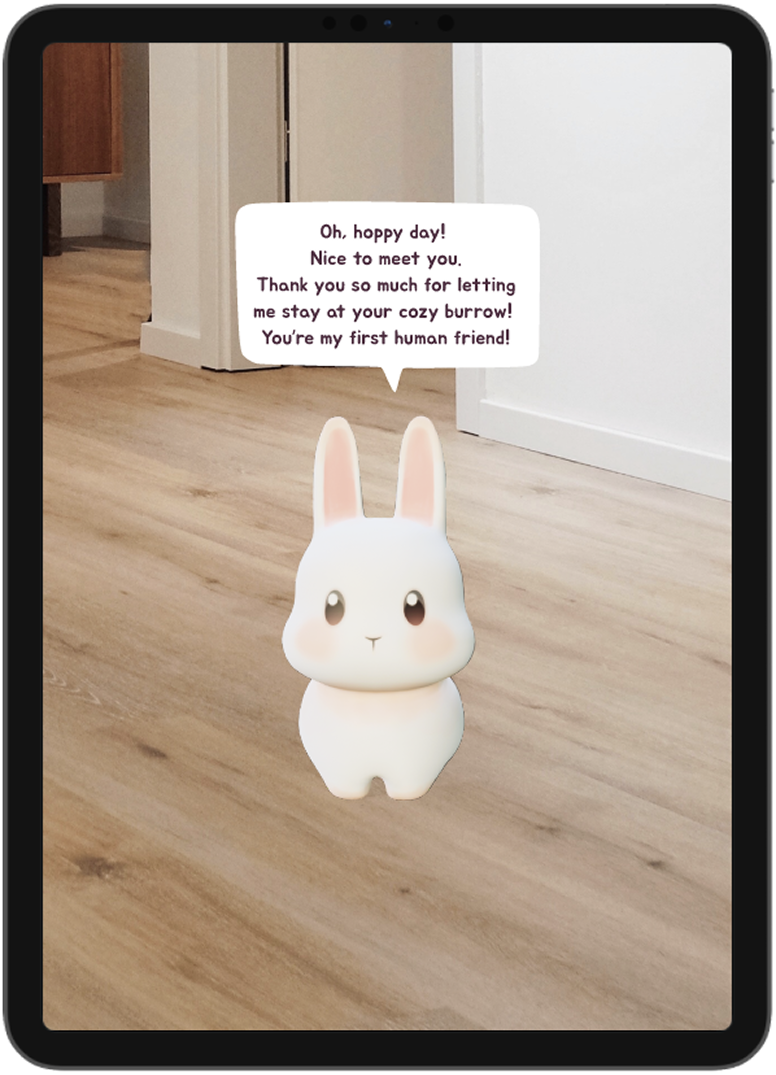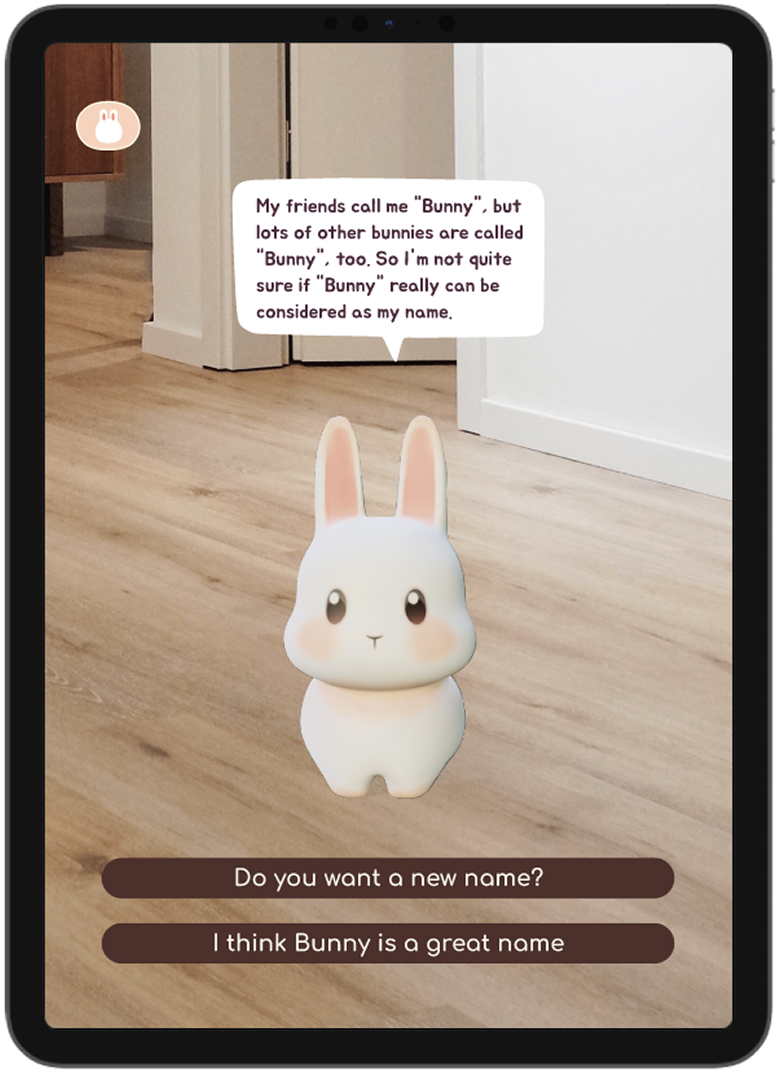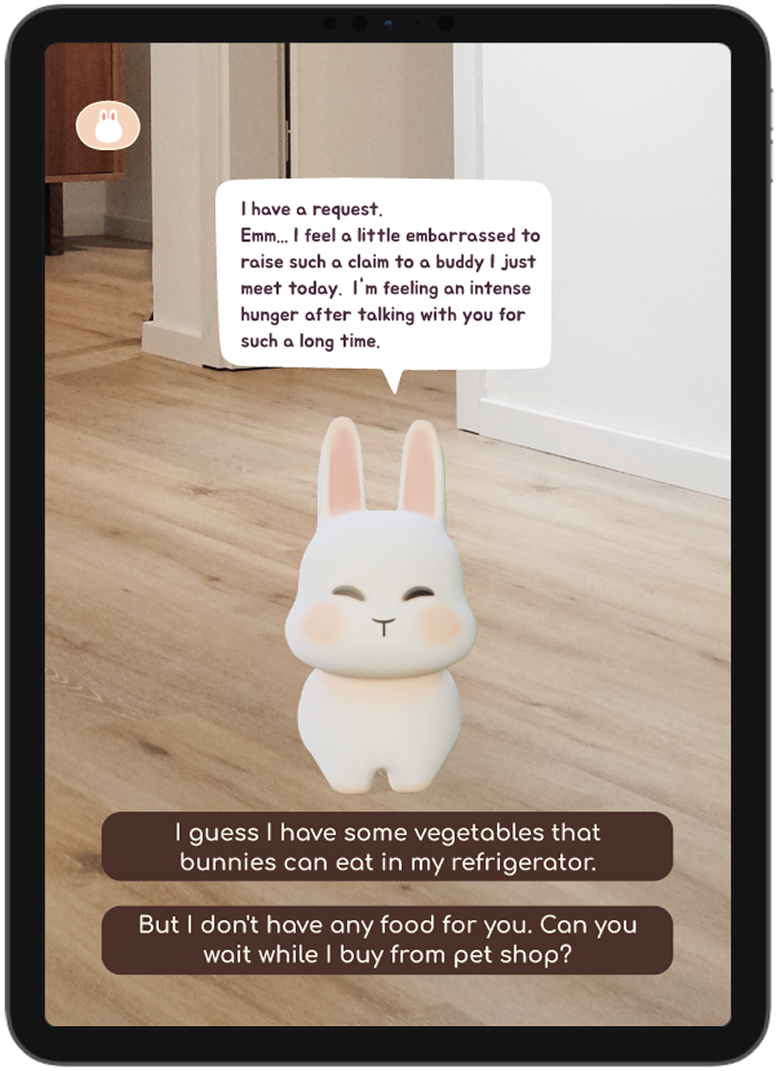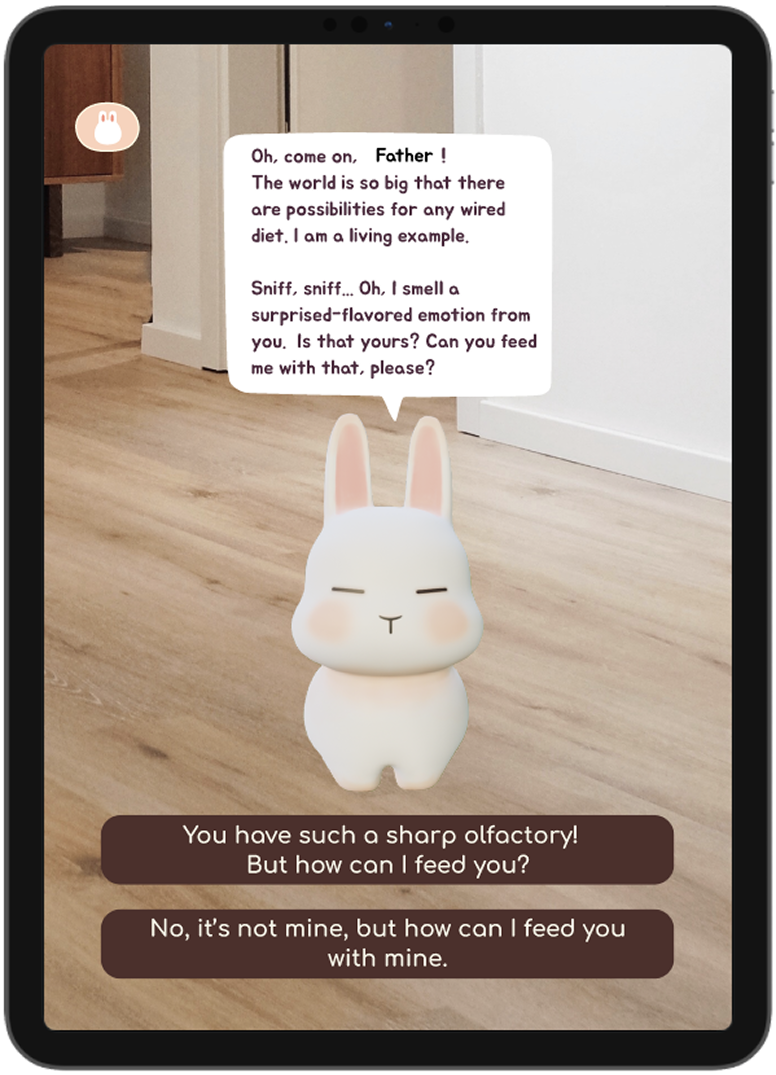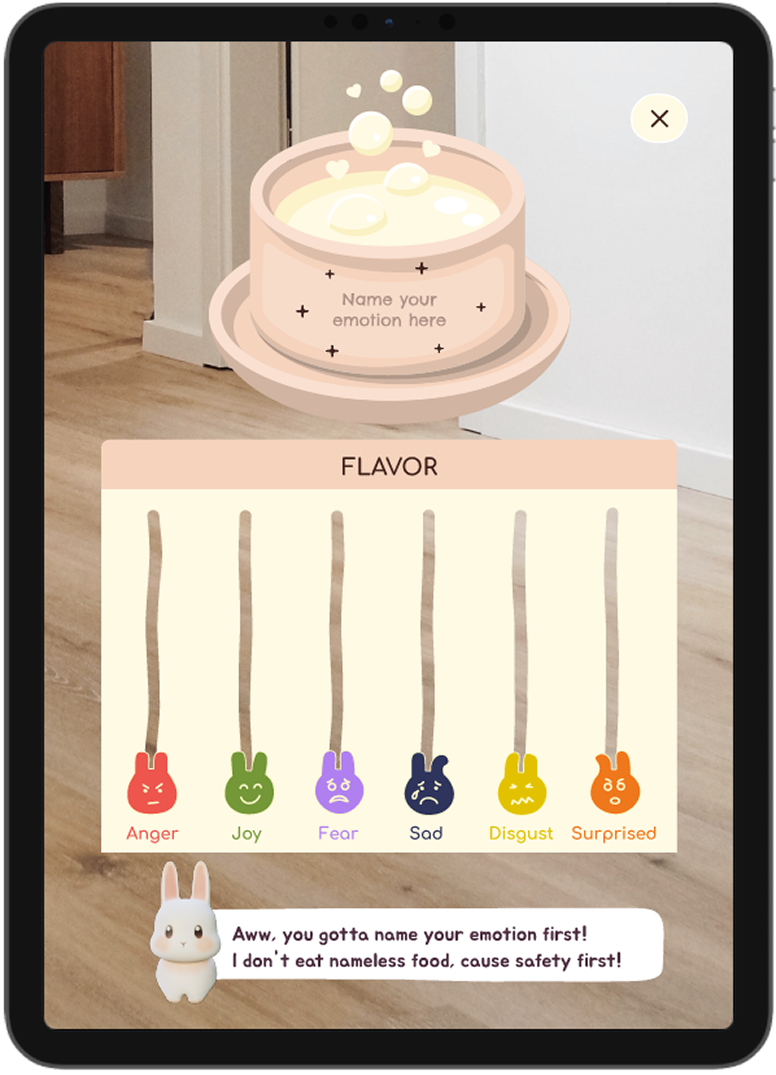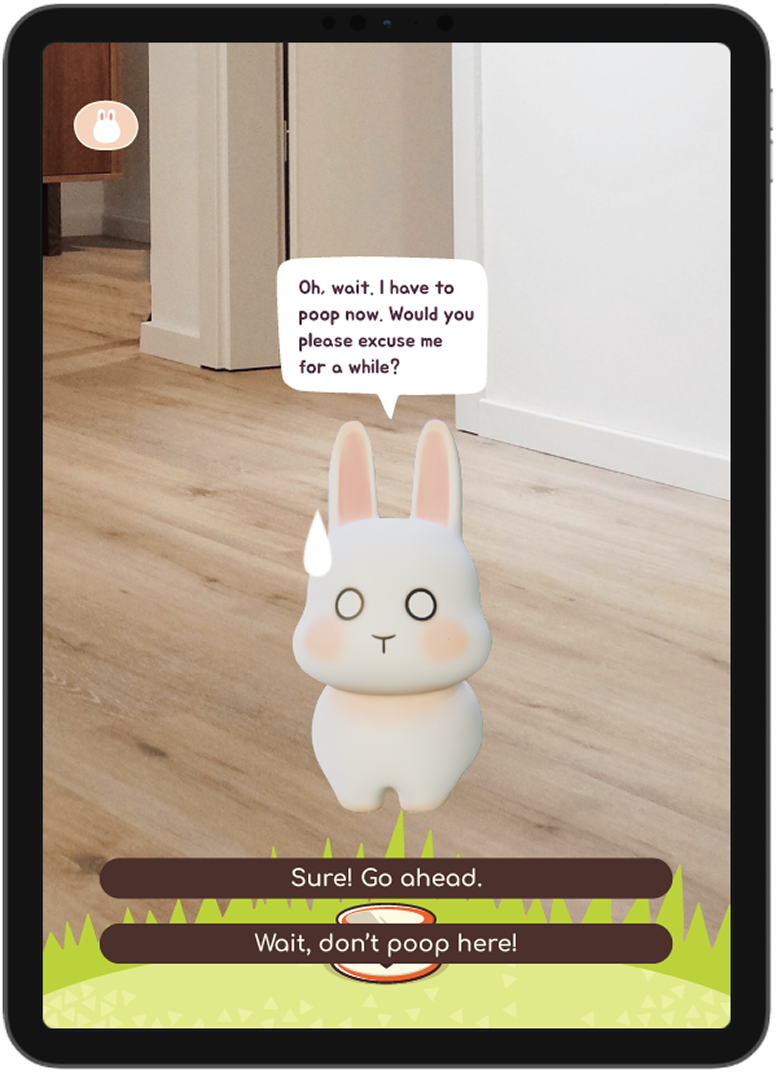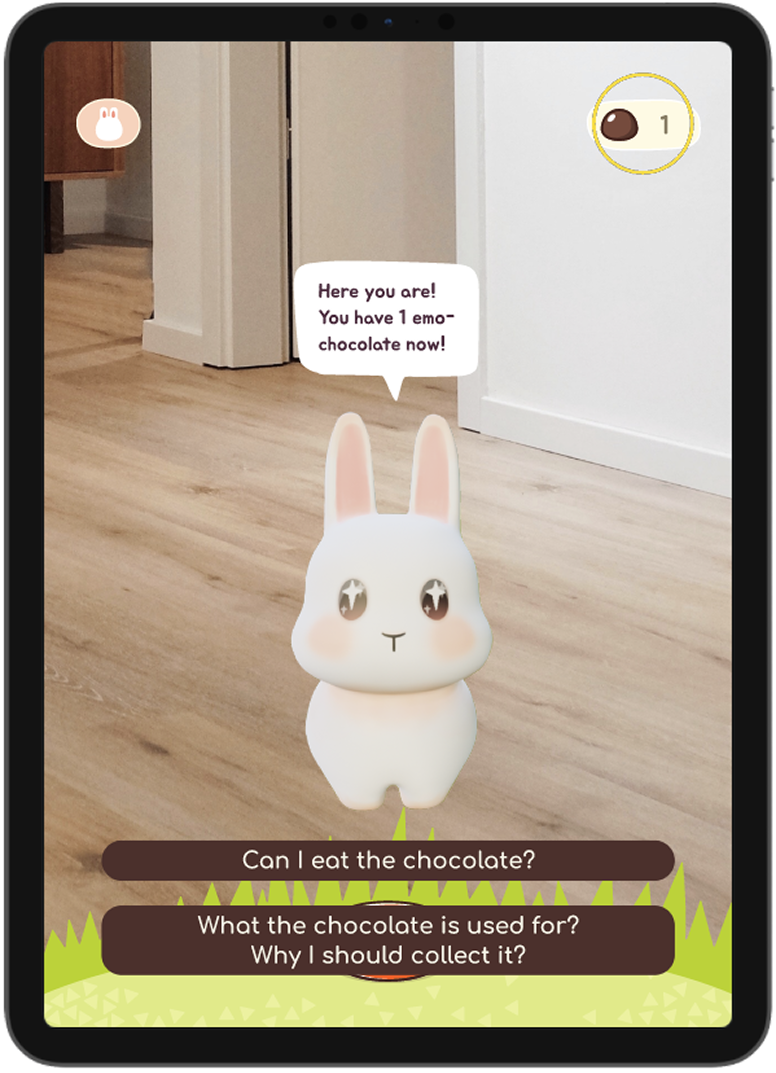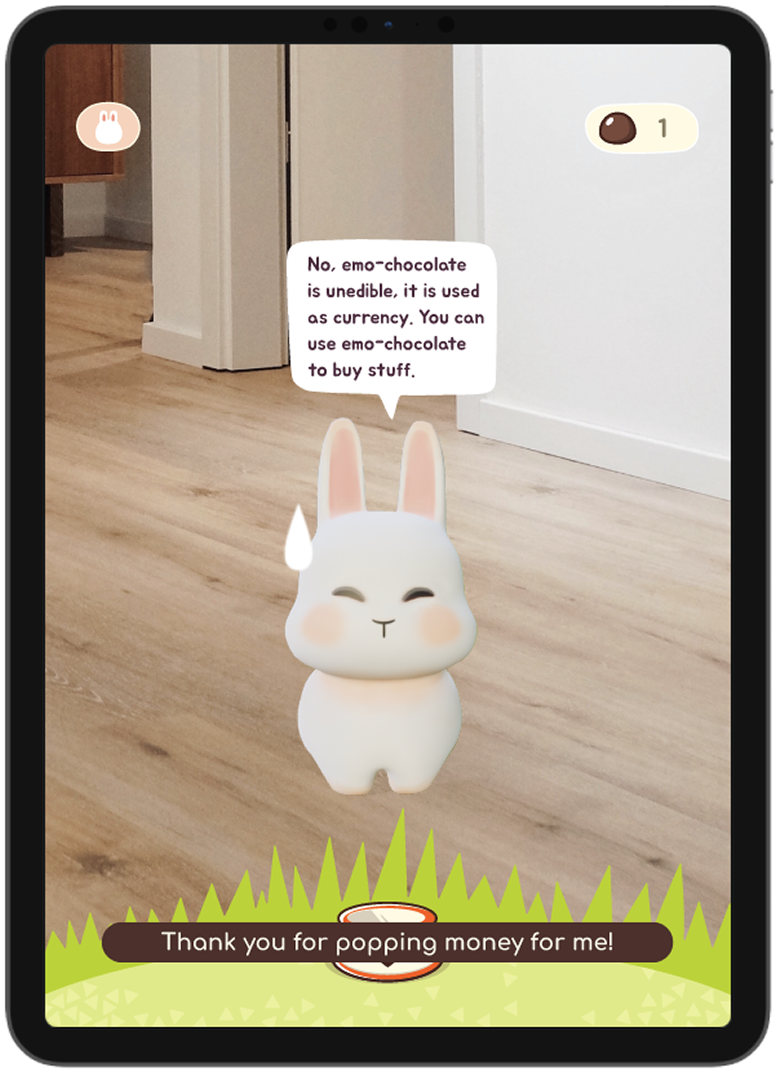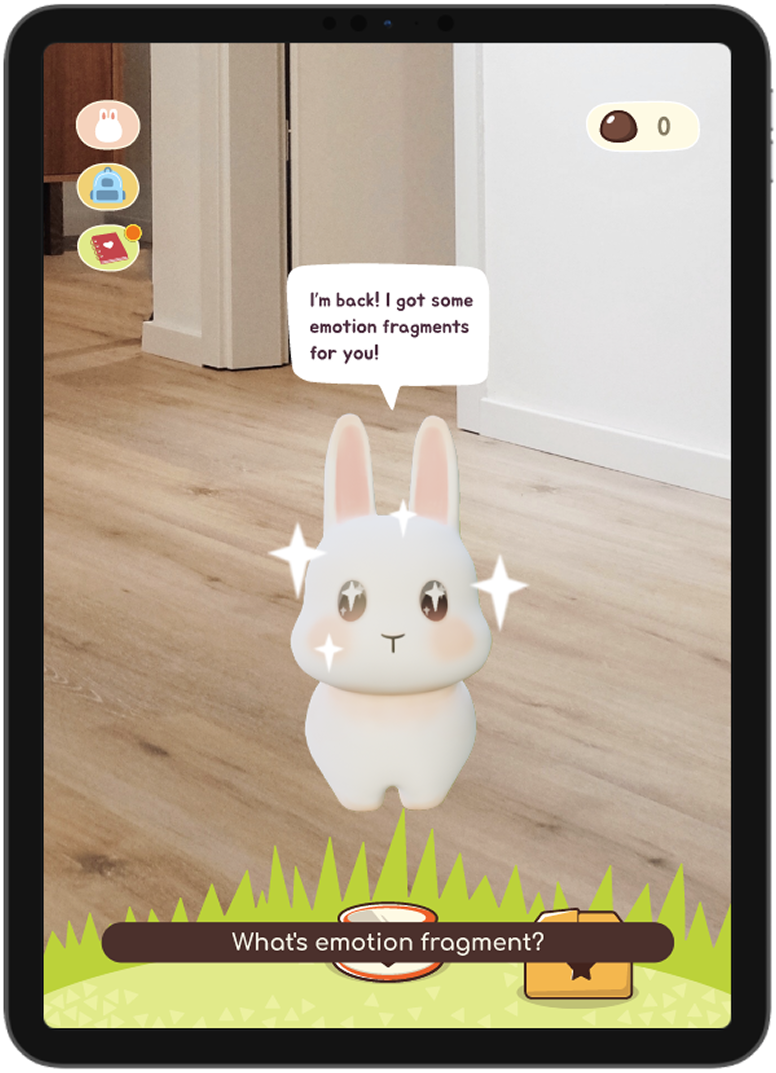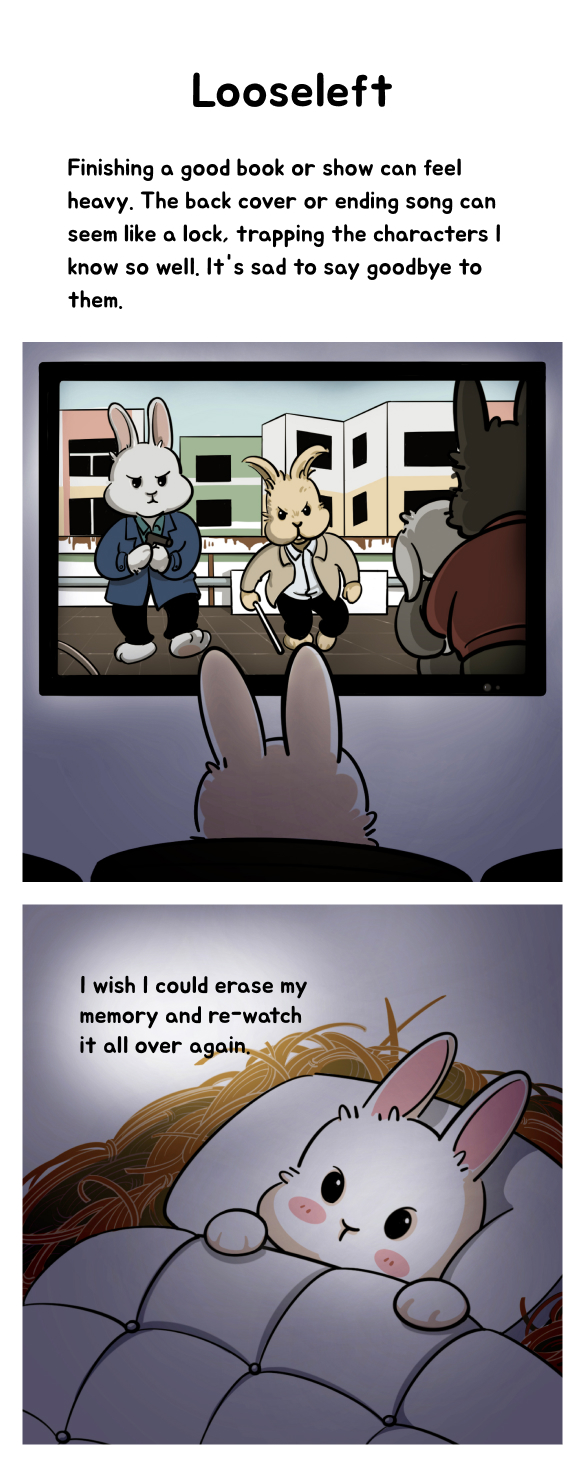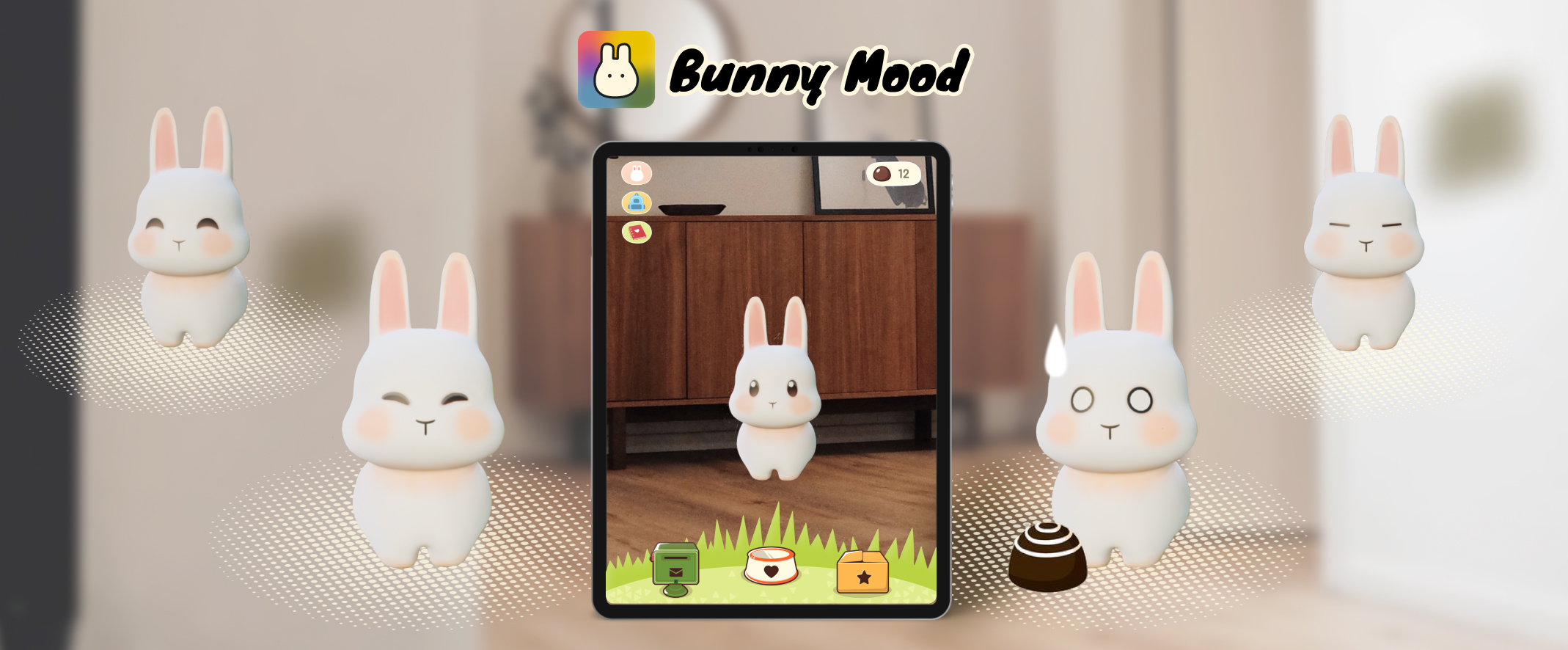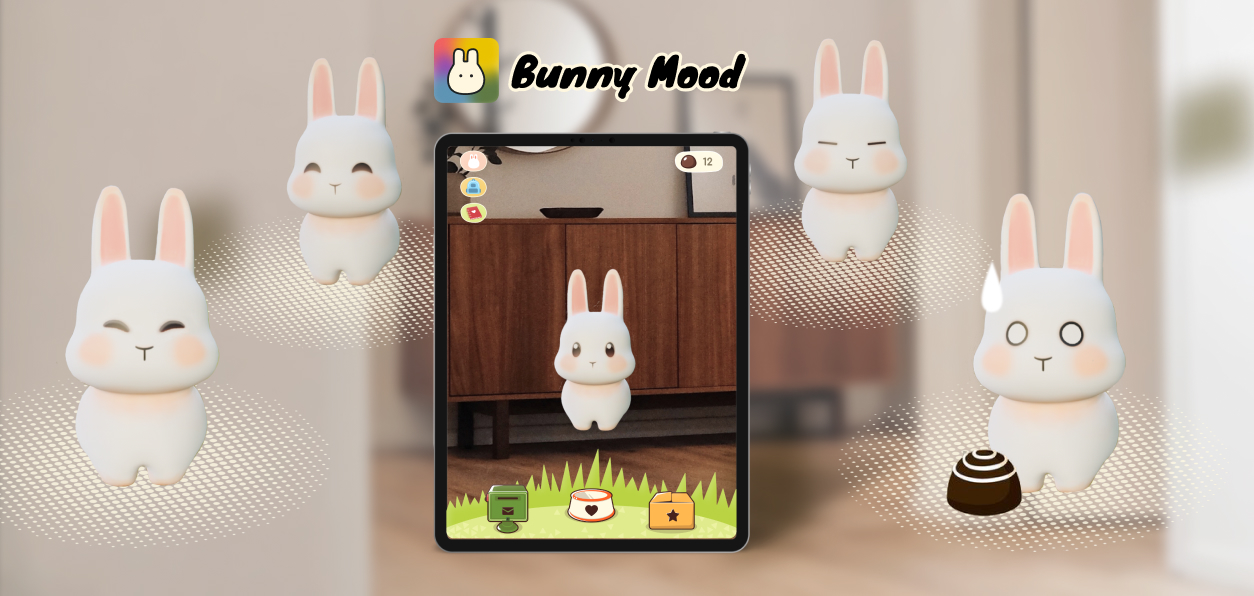
Bunny Mood
A gamified approach to making social emotional learning (SEL) more approachable and engaging.
TIME
February 2023 ~ May 2023
TEAM
Independent Student Project
INSTRUCTOR
The Personal Story Behind This Project
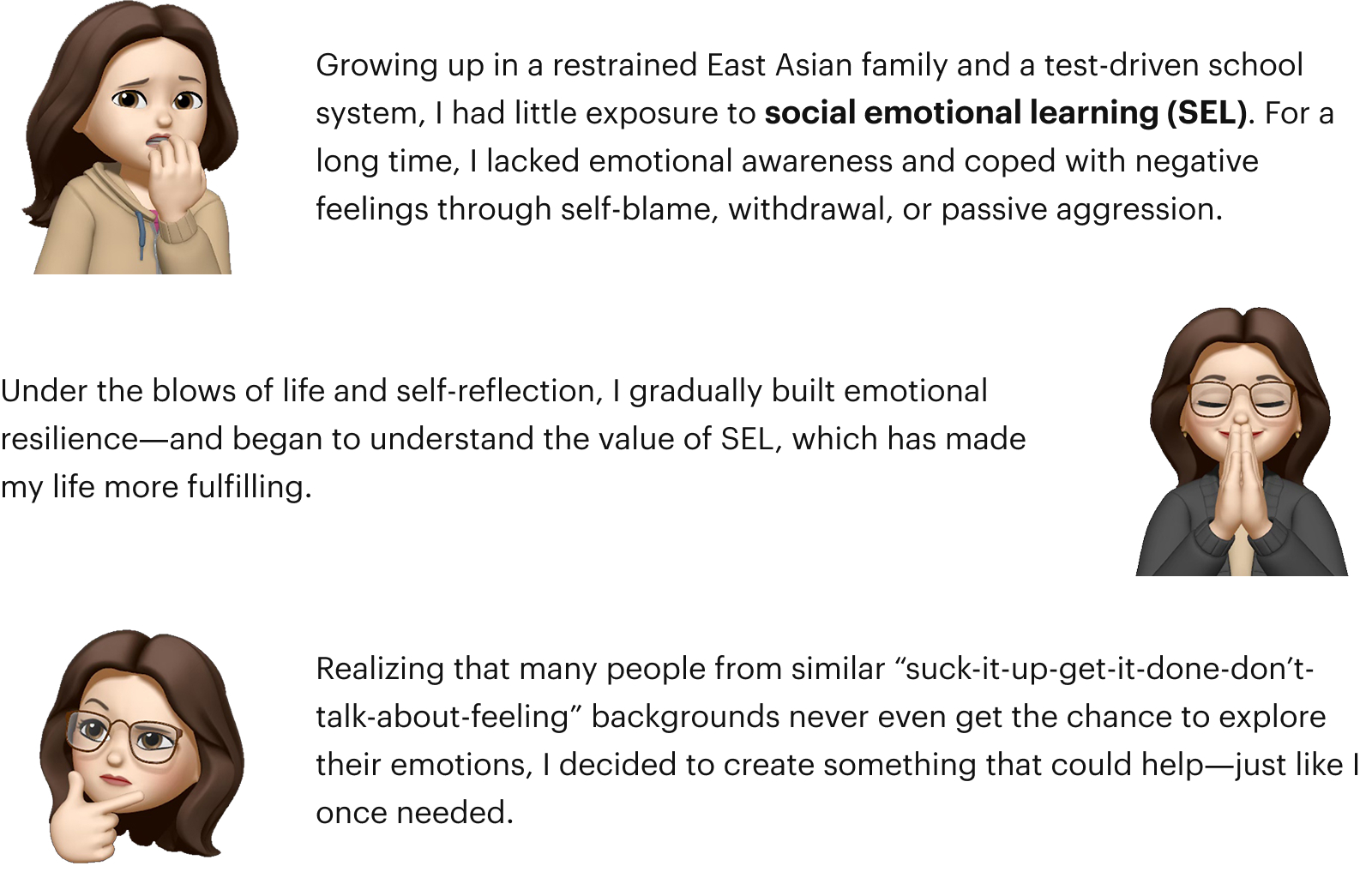
[ Overview ]
But first—here’s a glimpse
This realization became the foundation for my last student project—Bunny Mood. It transforms emotional check-ins into a daily, rewarding ritual: players log how they feel by feeding a virtual bunny, and receive “emotion chocolates” to unlock new items and stories. At its core, the game integrates SEL into playful, interactive experiences.
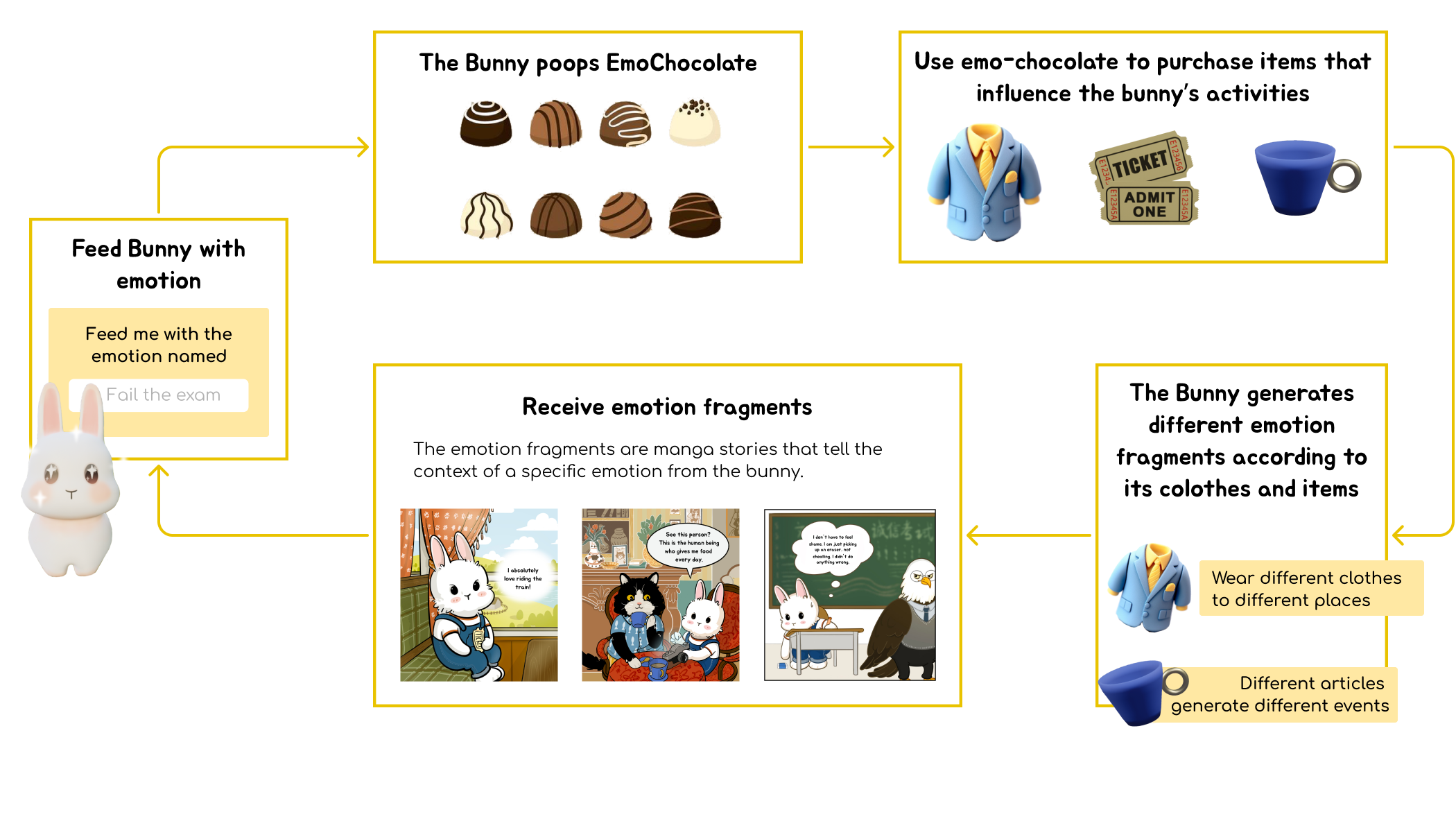
[ Outcome ]
Showcased at
The 2023 ParsonsGraduation Exhibition
Playtested by
60+ visitorsof all ages
Recurring feedback
•Emotional depth•Playful mechanics•Helping raise self-awareness

[ Design Process ]
A design process grounded in continuous playtesting

[ Background ]
SEL matters, but it’s often presented in ways that don’t connect with real life.
What is SEL?
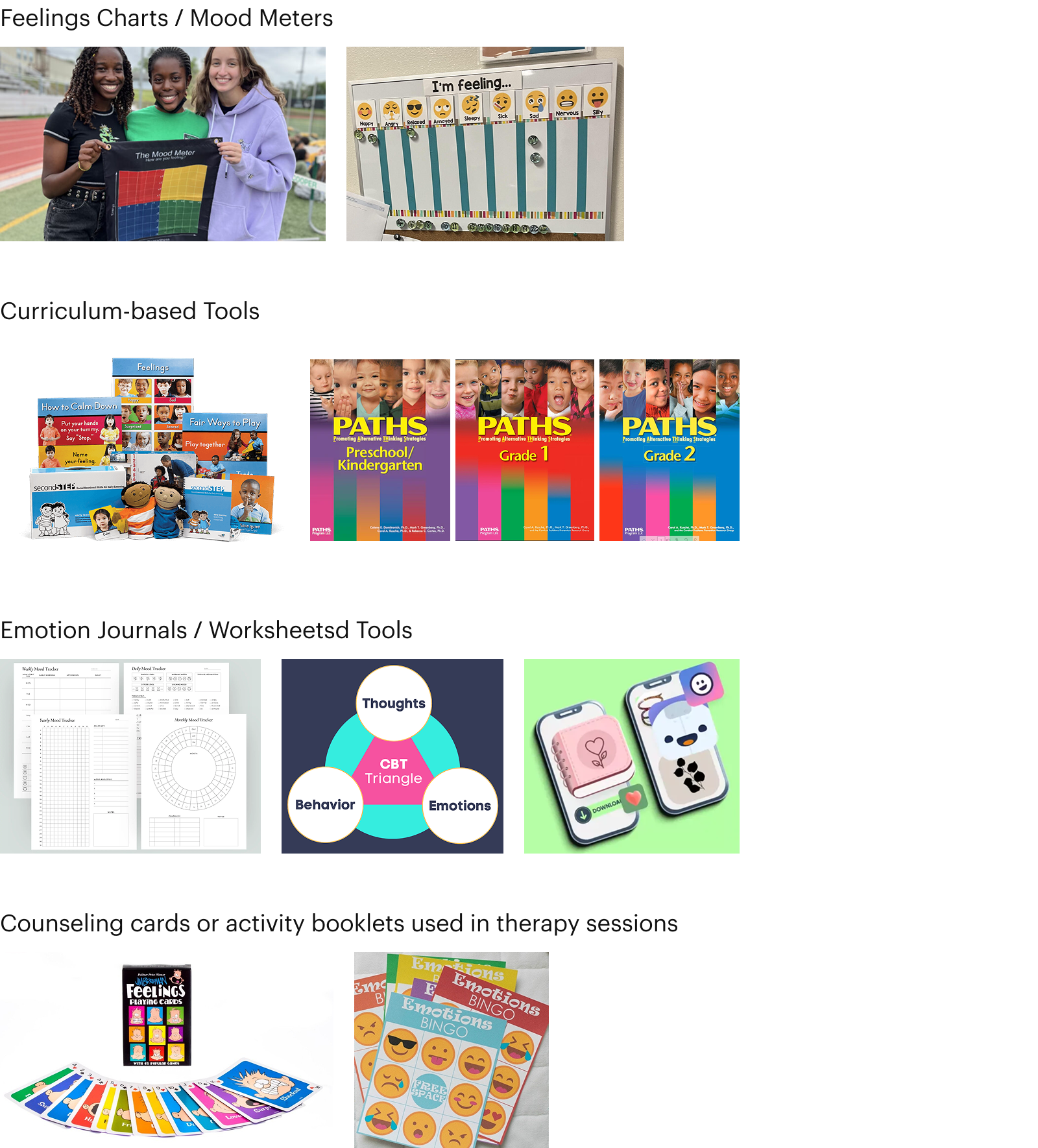
Traditional SEL Tools
Social and Emotional Learning (SEL) is defined as “The process through which all young people and adults acquire and apply the knowledge, skills, and attitudes to develop healthy identities, manage emotions and achieve personal and collective goals, feel and show empathy for others, establish and maintain supportive relationships, and make responsible and caring decisions.” According to CASEL (Collaborative for Academic, Social, and Emotional Learning), SEL is built on five core competencies that serve as the foundation for most SEL curricula: 1. Self-Awareness: Understand and manage emotions 2. Self-Management: Set and achieve goals 3. Social Awareness: Feel and show empathy for others 4. Establish and maintain positive relationships 5. Make responsible decisions
Limitations of traditional SEL tools
Lack of playfulness:Students, especially teens, often feel resistant or disengaged.
Emotionally abstract:Charts and rating scales make it hard to build emotional resonance.
Didactic tone:Many tools take an instructional approach rather than fostering exploration or empathy.
Low long-term engagement:Without feedback loops or social elements, users tend to drop off easily
The issue goes beyond tools—it’s rooted in cultural and systemic gaps in emotional education.
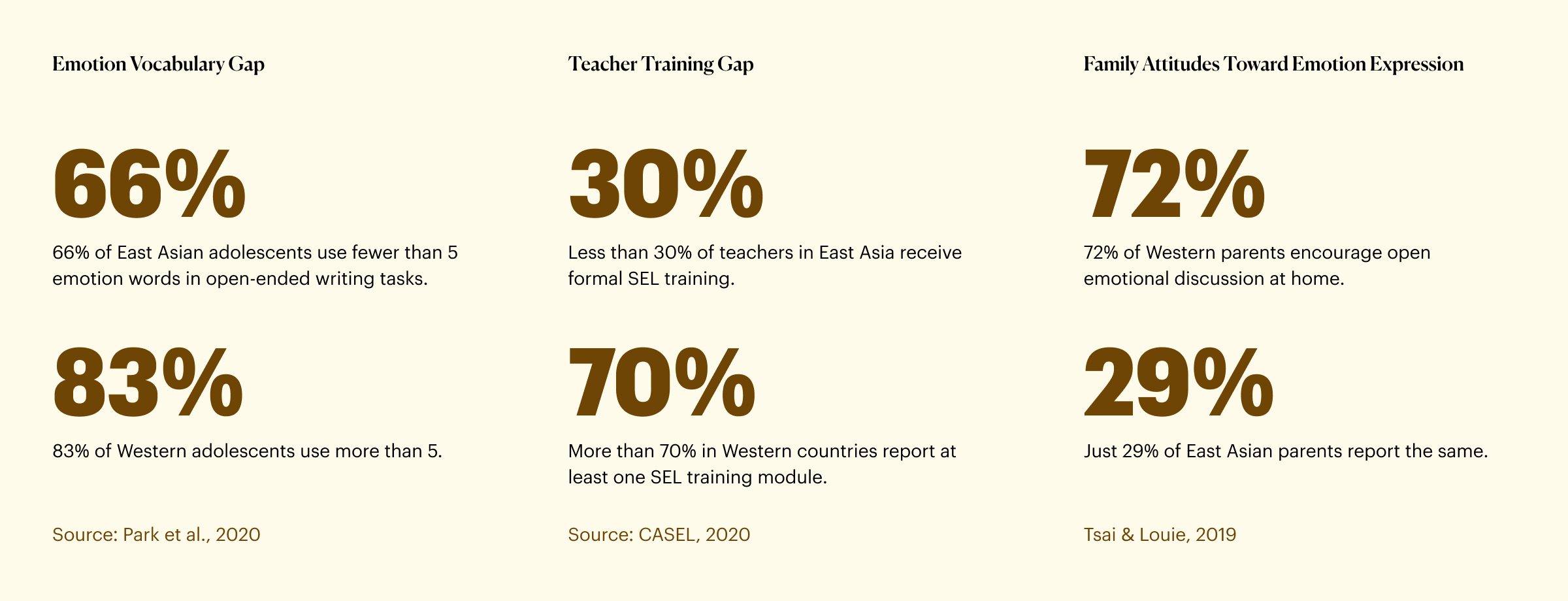
[ The Challenge ]
Many people miss out on SEL — not because they resist it, but because they’ve never been encouraged to.
[ Design Goal ]
How might we make social-emotional learning (SEL) more approachable and engaging—especially for teens at a critical stage of emotional development?
[ Ideation ]
Once I set the design goal, I began by experimenting with playful mechanics—because an engaging “hook” was essential for this project. Starting this way also allowed an early concept to guide the following research and design process. And the final idea is: A game where players feed emotions to a bunny that turns them into emotional currency — a playful way to deliver SEL.
Idea 1 & 2 & 3: Translate emotion-related physiological data into interactive visuals
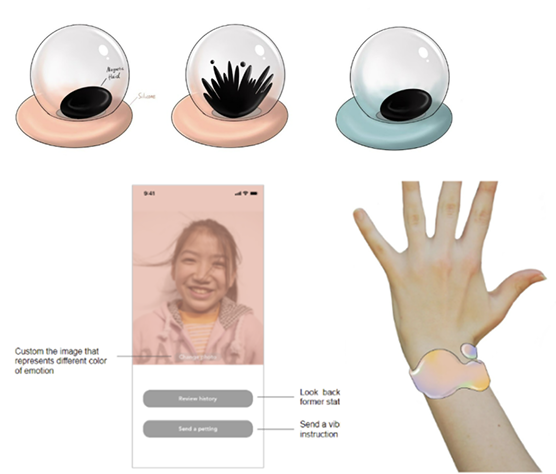
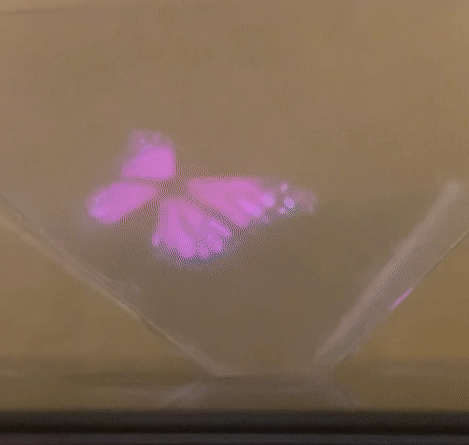
✓ Visualizing emotions helps with emotional awareness and regulation ✗ The immaturity of emotion detection technology ✗ Emotion detection technology is morally debatable
Idea 4: Visualize emotions into VR experiences, constituting a VR museum of emotions

✓ Immersive ✘ Hard to interpret ✘ Not everyone has a VR device
Idea 5: EmoMonster-A business simulation game Players fed a monster with facial expressions, and it pooped chocolates—each with an emotion story that could be sold for in-game currency.
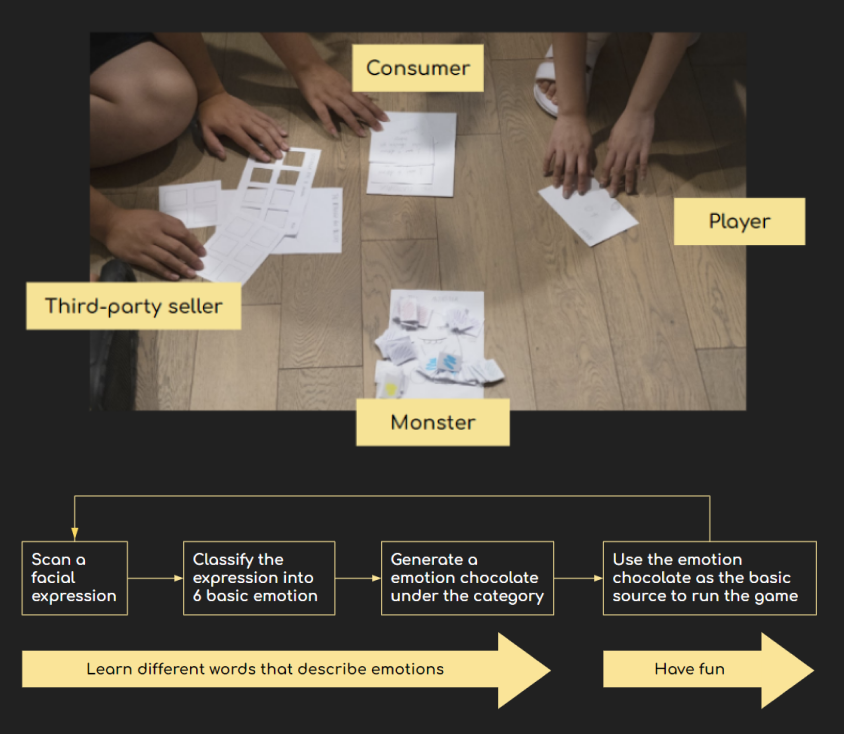
✓ Players enjoyed rich, story-based emotion descriptions ✓ “Chocolate” metaphor made feelings easier to process ✓ Poop humor resonated with teens ✘ Emotions are interchangeable here—lacked depth ✘ Business mechanics distracted from emotional focus
Idea 6: EmoMonster-Board game for two players. Two players assign three tokens—frequency, pleasantness, and negativity— to emotion monster cards, then use them in battles.

✓Assigning tokens encourages self-reflection and emotional awareness ✓Players enjoyed rich, story-based emotion descriptions ✓Turning emotions into monsters made them easier to understand and manage ✘ Board games lack the consistency needed for real emotional growth ✘ Combat mechanics shifted focus away from emotions toward winning
Idea 7: EmoTown – a multiplayer board game Players assign tokens—frequency, pleasantness, and negativity— to emotion monster cards, then battle with them on the Town Map.
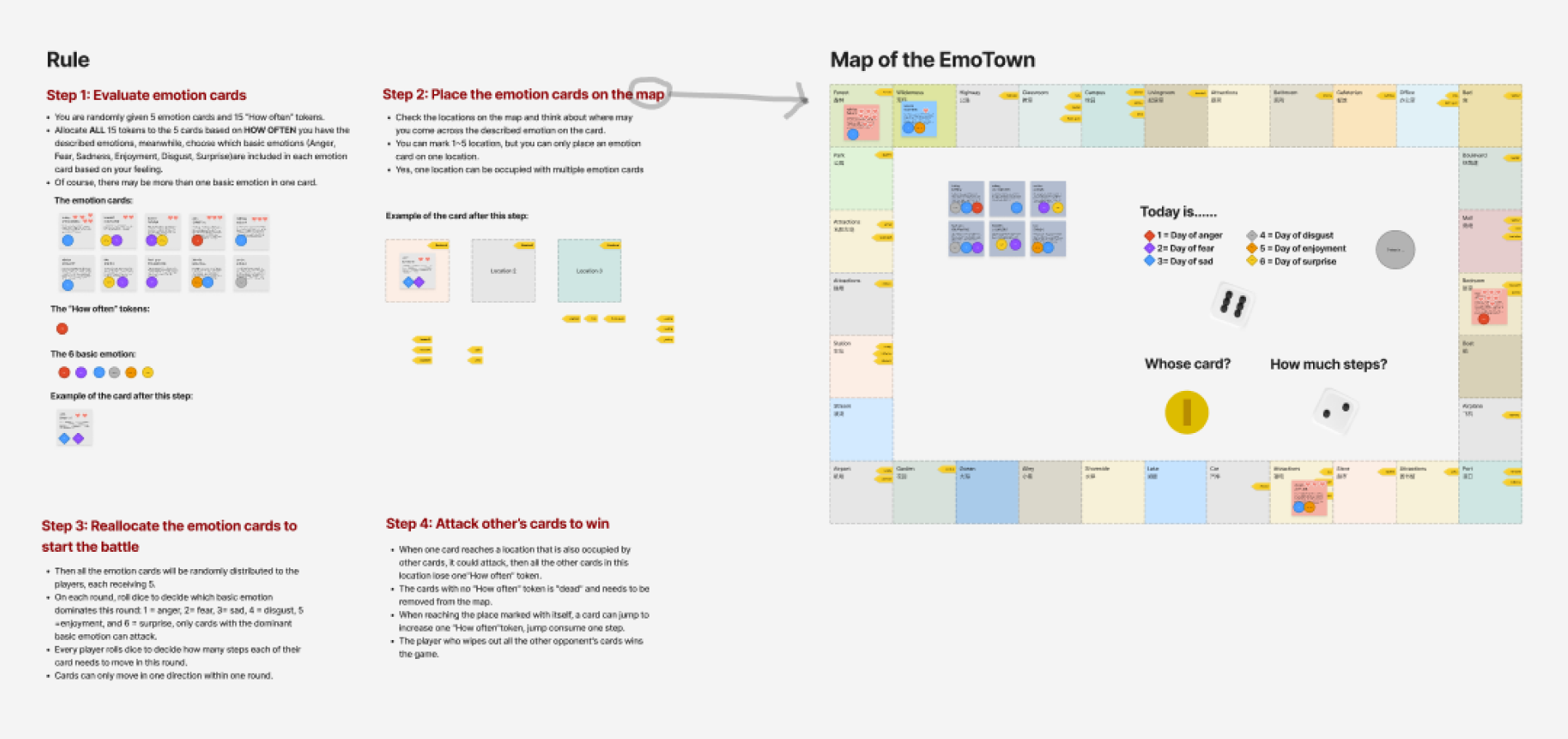
Rapid Prototype & Playtest in FigJam
✓Assigning tokens and placing cards encourages self-reflection ✓ Players enjoyed reading emotion stories and observing others’ choices ✓Turning emotions into cards made them easier to process ✘ Occasional play isn’t enough for long-term emotional growth ✘ Combat focus distracted from emotional intent ✘ Rules were too complex for non-gamers ✘ Each round was too long—around 40 minutes
The final concept: Bunny Mood—a pet game that playfully encourages emotional logging—took shape during this process. Feed Bunny your emotions → Bunny poops Emo-Chocolate (the in-game currency) → Use it to buy props and influence Bunny’s behavior and receive “Emotion Fragments” stories
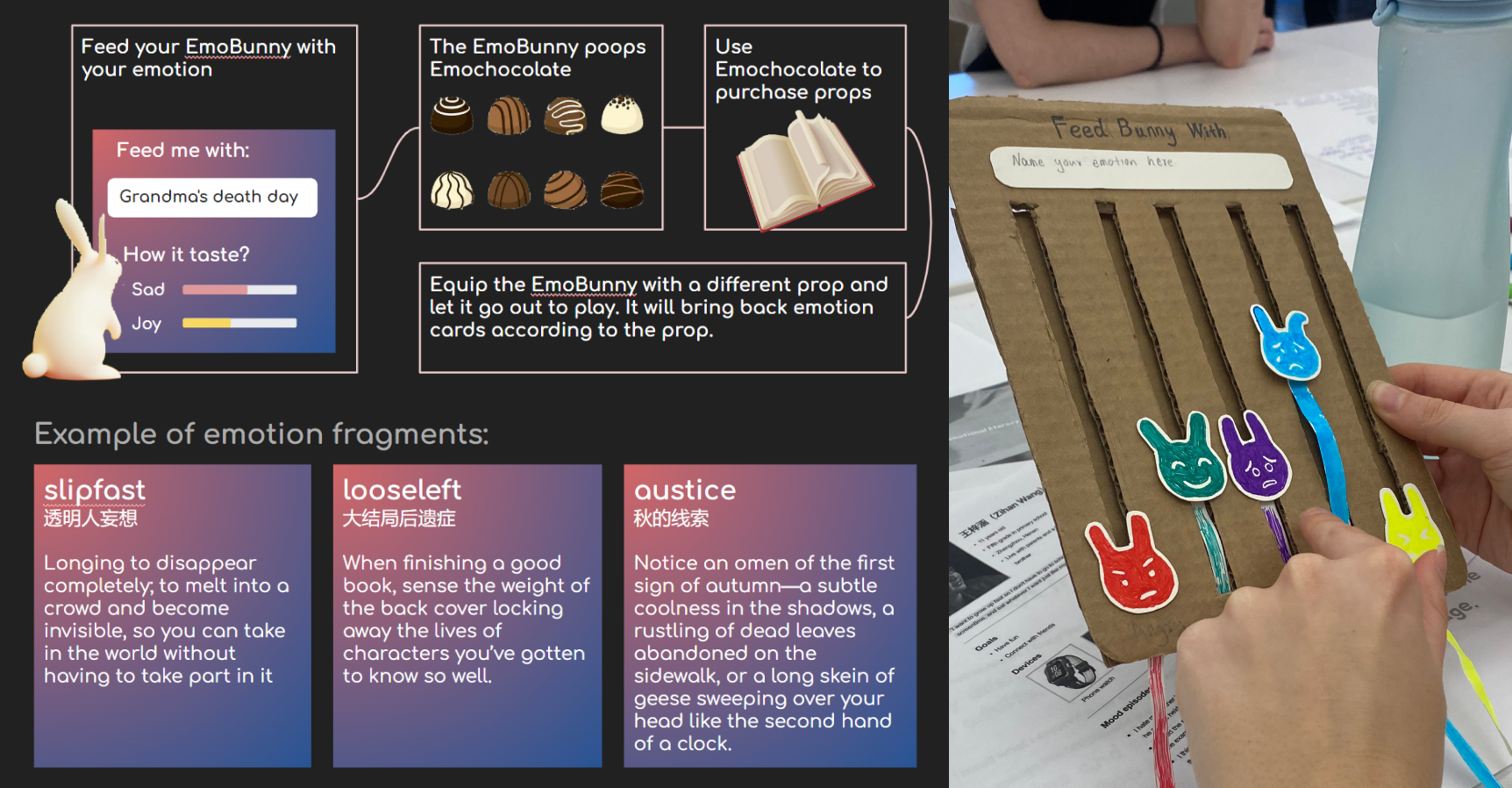
✓ Feeding acts as an emotional check-in and builds awareness ✓ Players enjoyed the “Emotion Fragments” stories ✓ Poop humor felt fun and relatable for teens ✓ Pet-game format is intuitive and emotionally soothing ✓ Turning emotions into bunny droppings made them easier to process ✓ Non-competitive, single-player flow—play anytime, stop anytime ✓ Bunny avoids reinforcing gender or emotional stereotypes
[ User Research ]
Define the product space to understanding the users
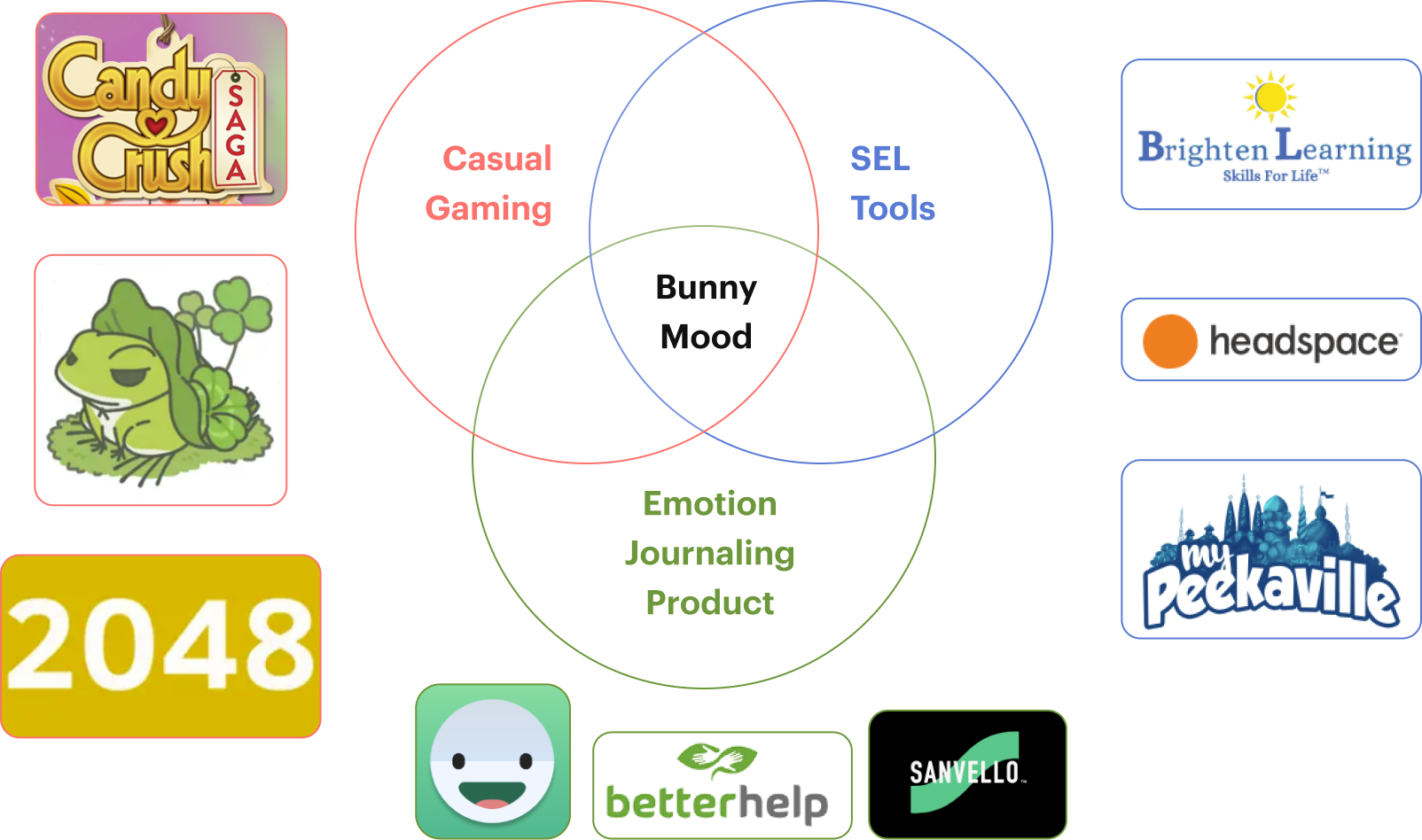
Method:
1. Conducted 19 interviews across age groups to understand diverse emotional needs, while prioritizing insights from teens (12–19), the main target users of Bunny Mood.
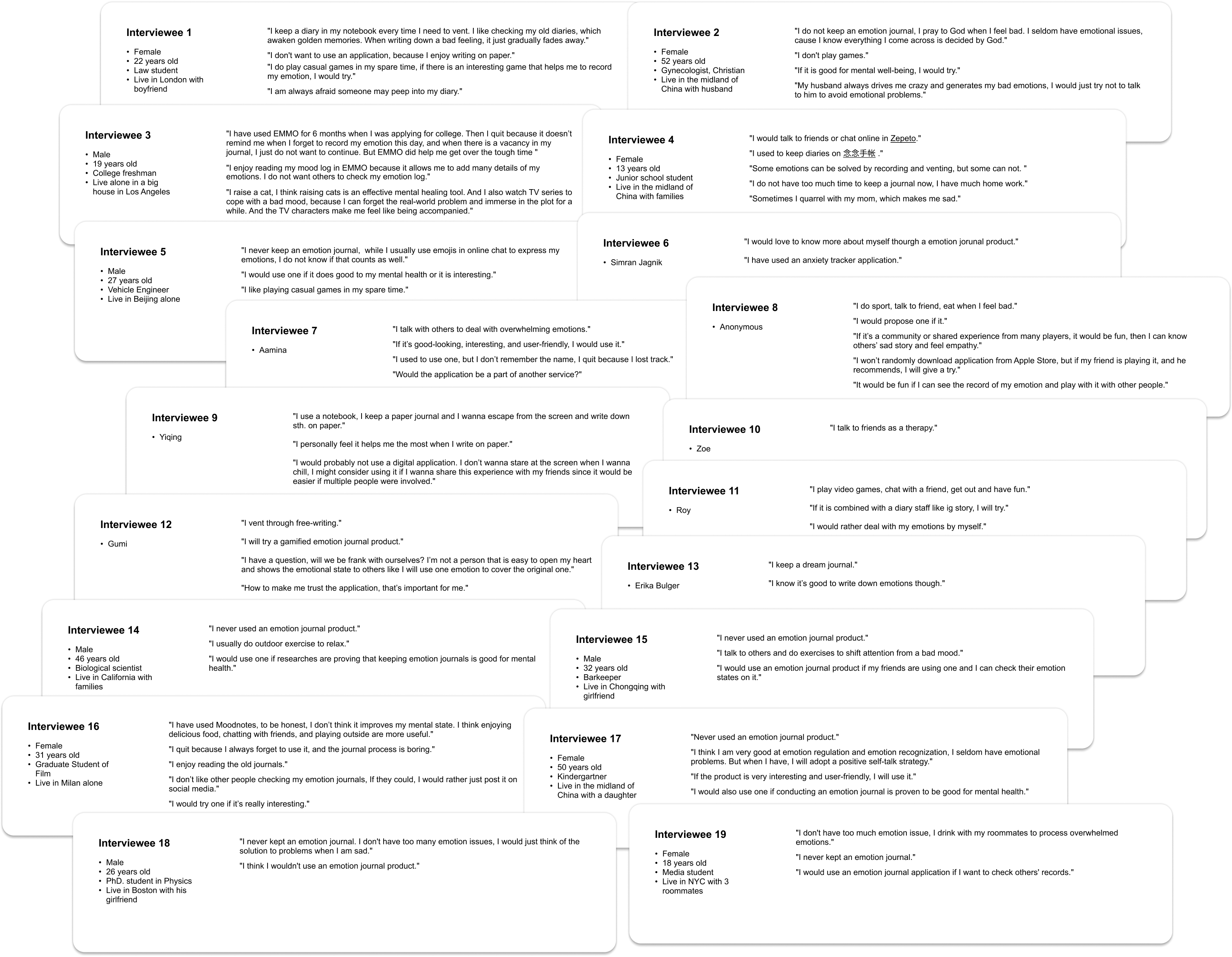
2. Analyzed App Store reviews of related products for recurring user insights.
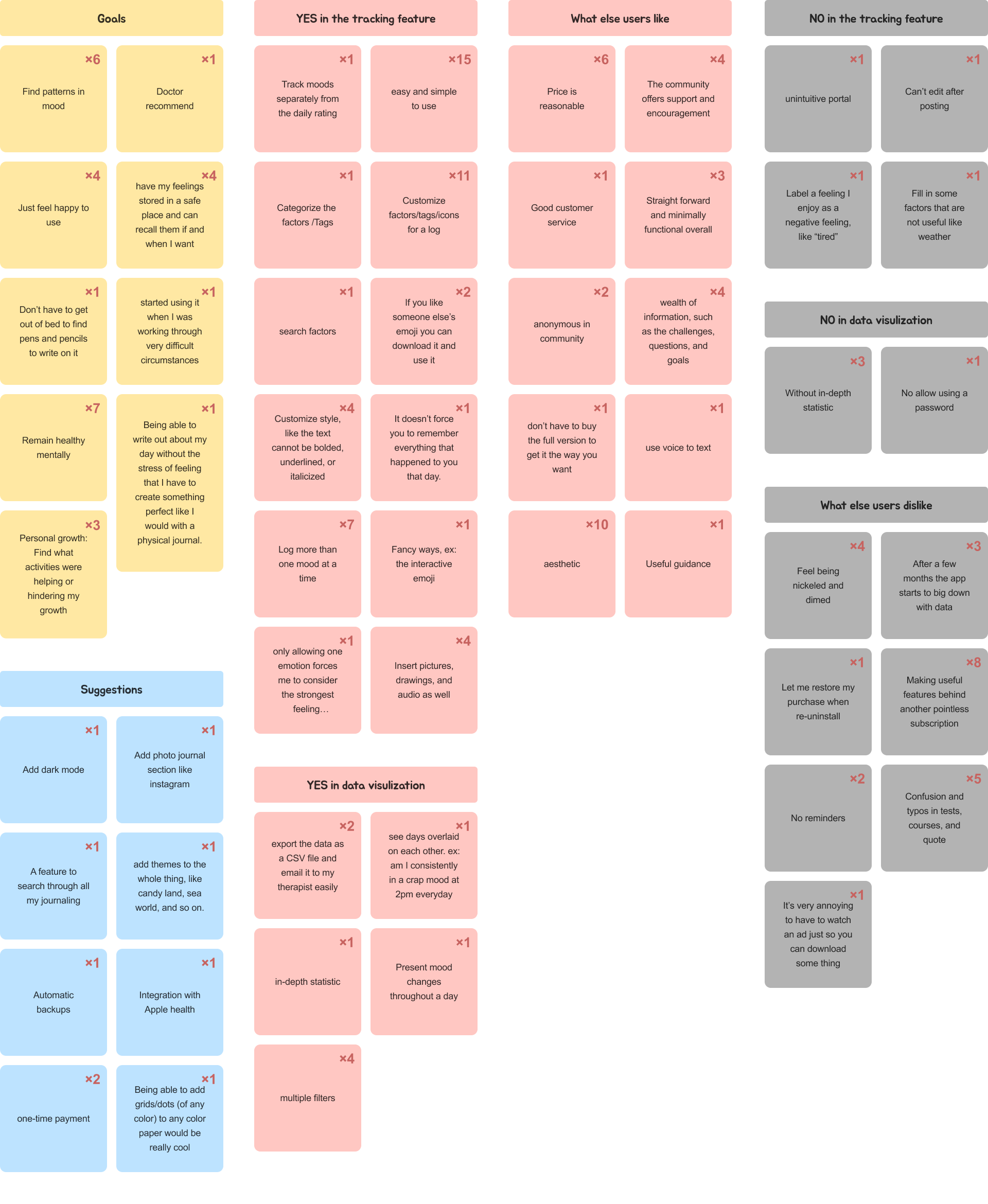
[ Insights ]
For “emotion tracking,” a key function in SEL, users show diverse preferences: • Some prefer the natural flow of a diary-style format, sometimes inserting media. • Others prefer the simplicity of tag selection. • Still others lean toward alternative methods.
Small rewards help sustain engagement • Users are more likely to keep logging emotions when small rewards or progress markers are present. • Light gamification (e.g., streaks, unlockable items, or badges) motivates continued use without feeling burdensome. • Rewards should remain subtle and supportive—too much pressure (e.g., strict streaks) risks discouraging users when they miss a day.
Reviewing Past Records Feels Rewarding • Users enjoy discovering patterns in their emotional records. • Recalling past experiences gives them a sense of warmth and comfort.
The broken windows effect • Once users stop and a gap appears in their records, it becomes difficult to continue. • The experience should be designed to be forgiving and resilient to breaks.
Social features are highly polarizing: • Some users strongly oppose making their emotions visible to others, while some enjoy sharing. • However, nearly all users like the option to view others’ emotions.
Usage Context: • Most users engage with this type of product during short breaks after completing important tasks. • The experience therefore needs to feel light, easy, and not mentally demanding.
[ Prototyping ]
Prototype 1: A simple lo-fi prototype to illustrate the idea and gather feedback
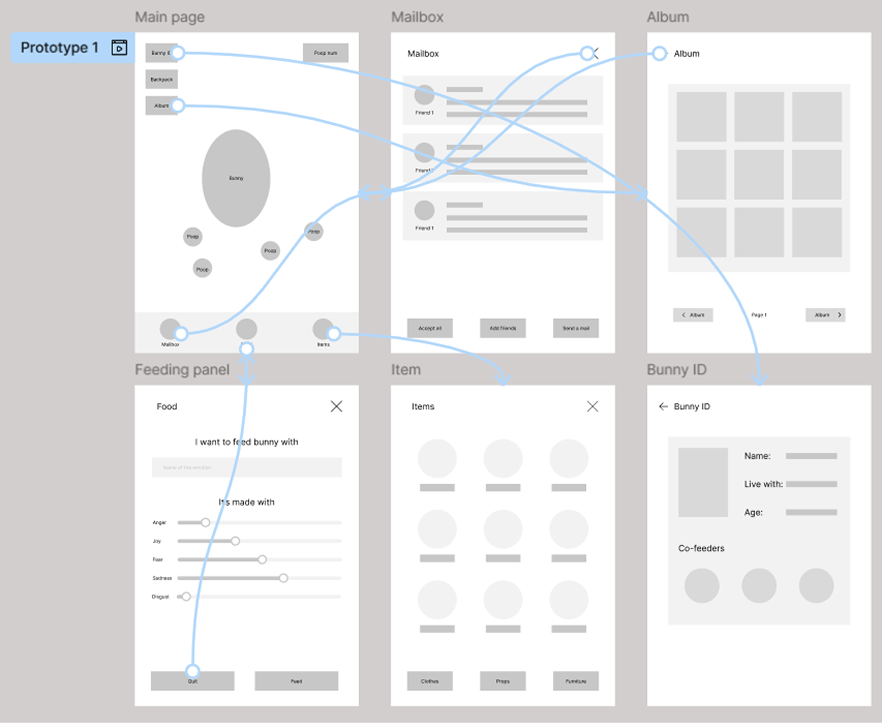
Prototype 2: • Transformed from a 2D app to an AR game to create a sense of companionship. • Added characters and narrative design. • Focusing on testing player feedback on the emotion logging method.
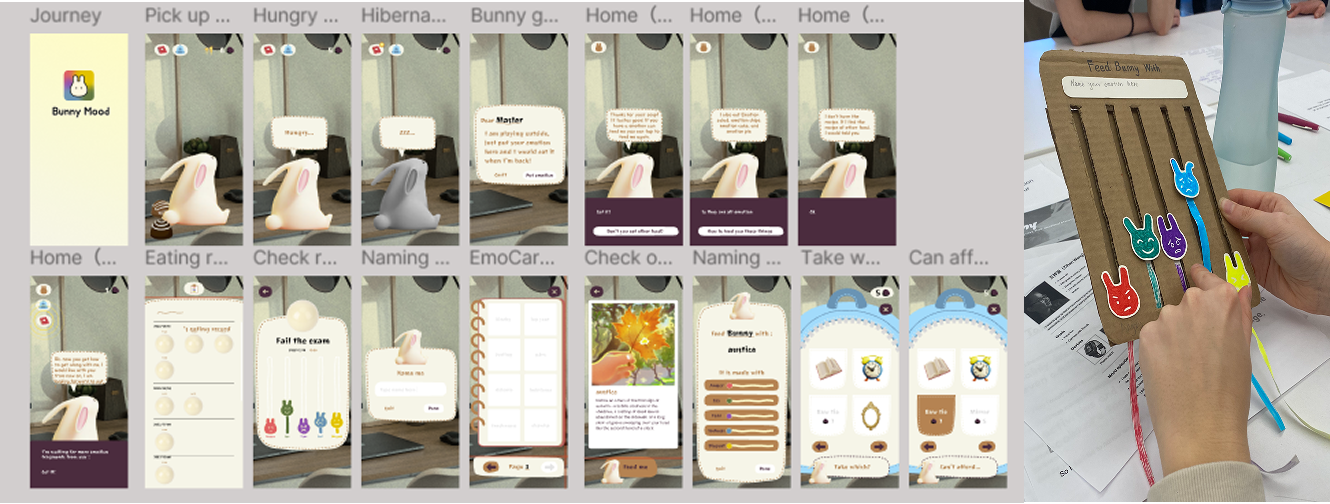
Prototype 3: • Added comics and narrative design

Prototype 4: • Changed the Bunny model • And more facial expressions to the Bunny. • Integrated the tutorial into the narrative design.
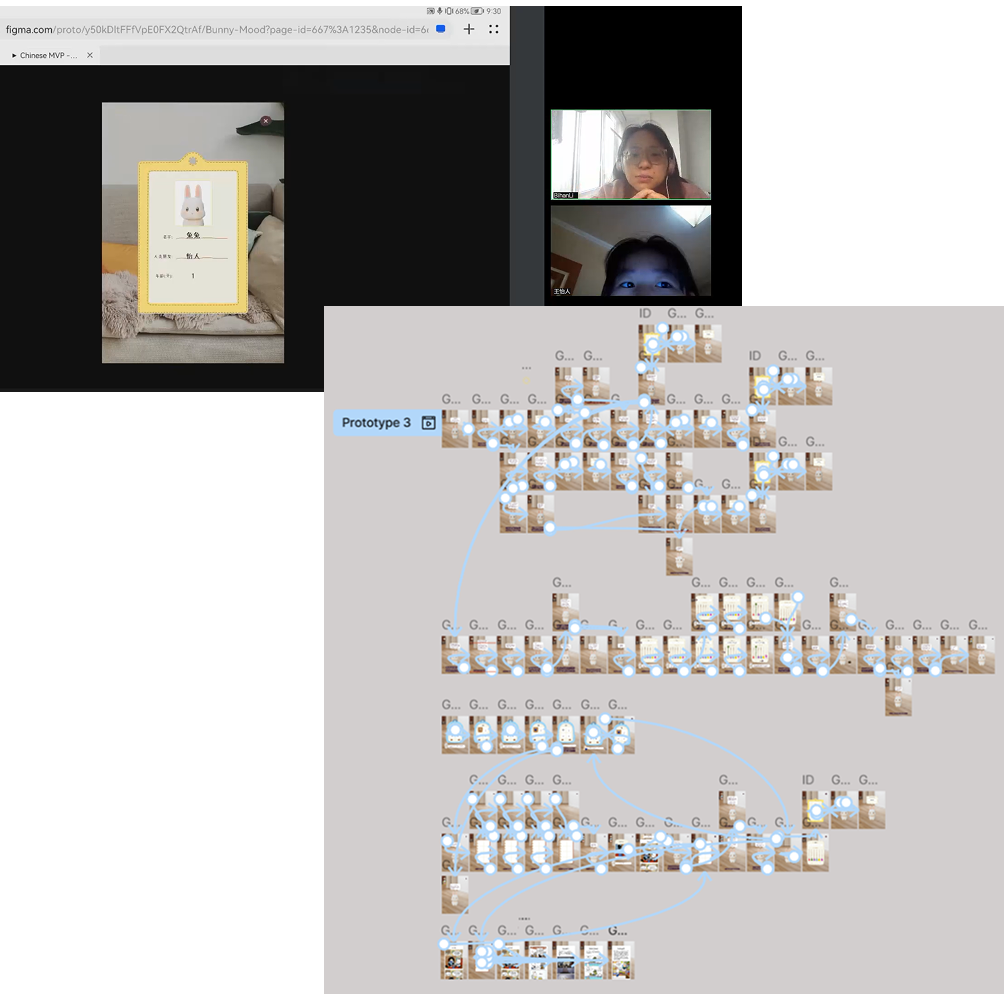
Prototype 5: • Add more types of bunny foods (the emotion-logging methods) • Revised the narrative design to make it more understandable and funny.
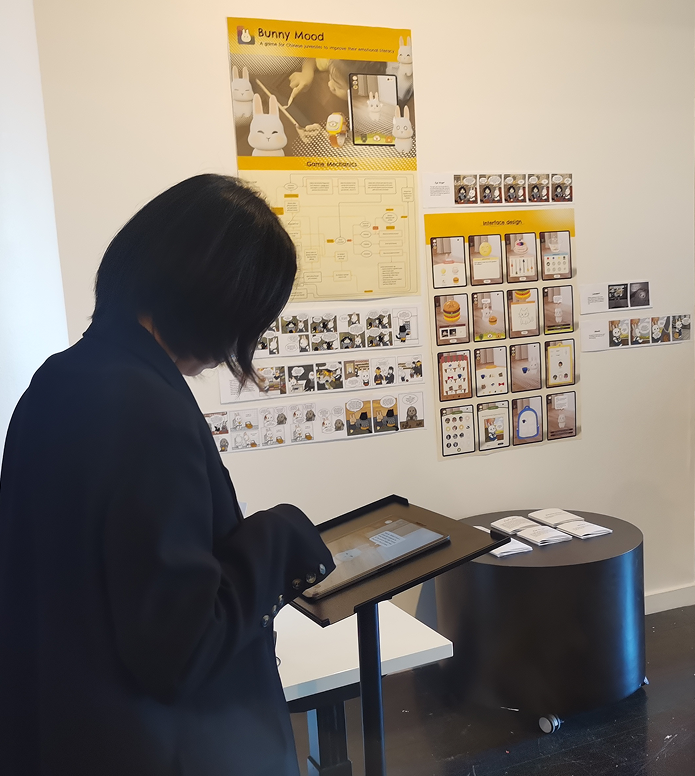
[ Gameplay ]
Feed the Bunny, Log the Emotions
Feeding emotions to the Bunny—who then turns them into Emo-Chocolate—starts the game loop. This playful act helps players externalize their feelings, making it easier to acknowledge and express emotions in a light, judgment-free way.
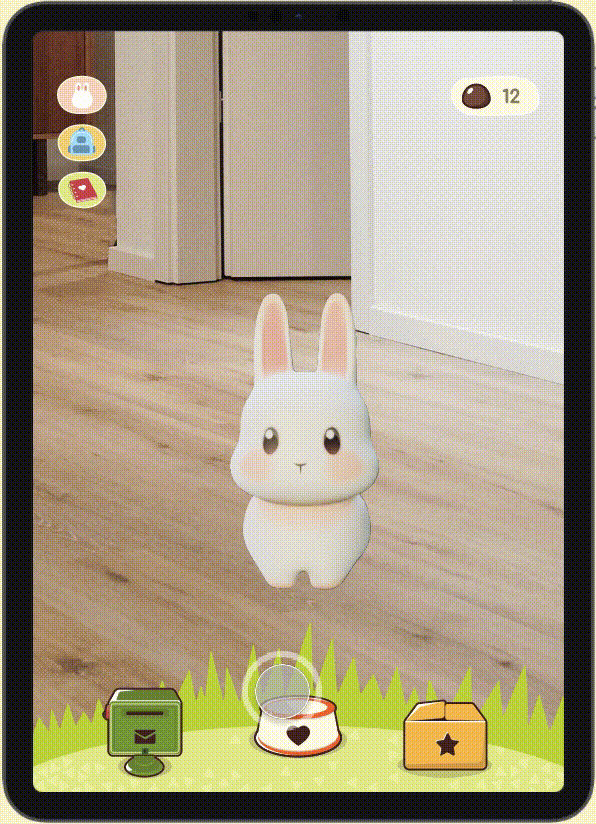
4 bunny foods Four types of bunny food were introduced in the final design: emo-ball, emo-soup, emo-salad, and emo-burger. They cater to different logging habits, facilitating diverse perspectives in analyzing and understanding emotions.
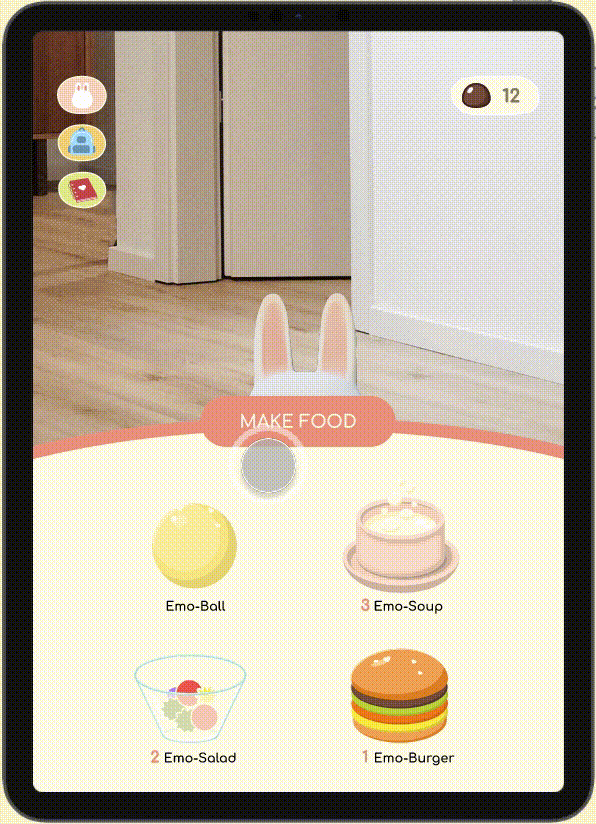
Emo-ball The emo-ball is the most convenient option for creating food. You can record your emotions by drawing expressive visuals and providing accompanying text descriptions.
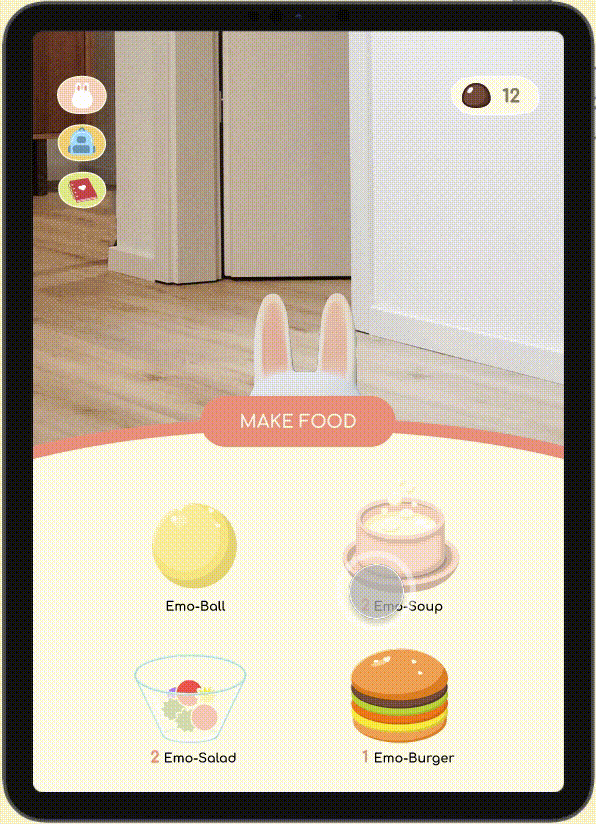
Emo-soup Emo-soup enhances understanding of complex emotions. Assign a name and select fundamental emotions for a comprehensive experience.
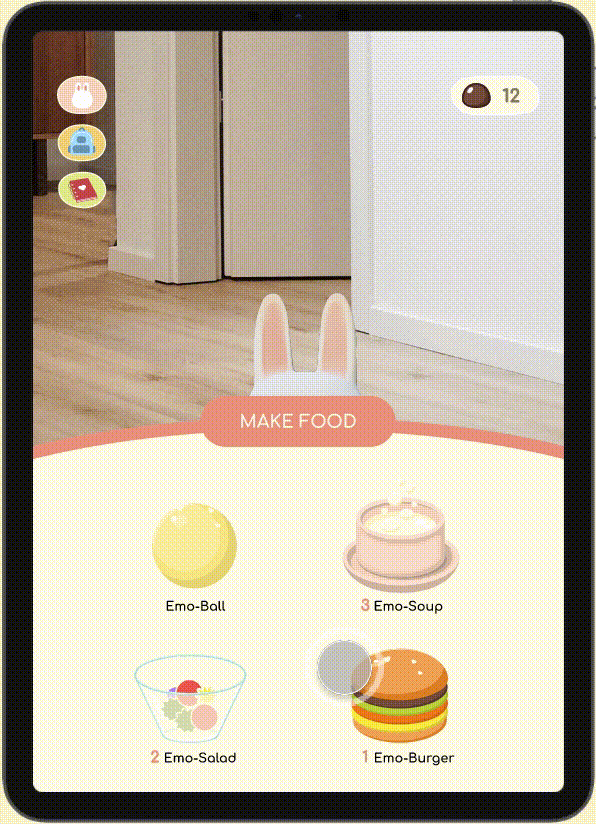
Emo-burger In an emo-burger, you can upload media files to capture and preserve emotions vividly.
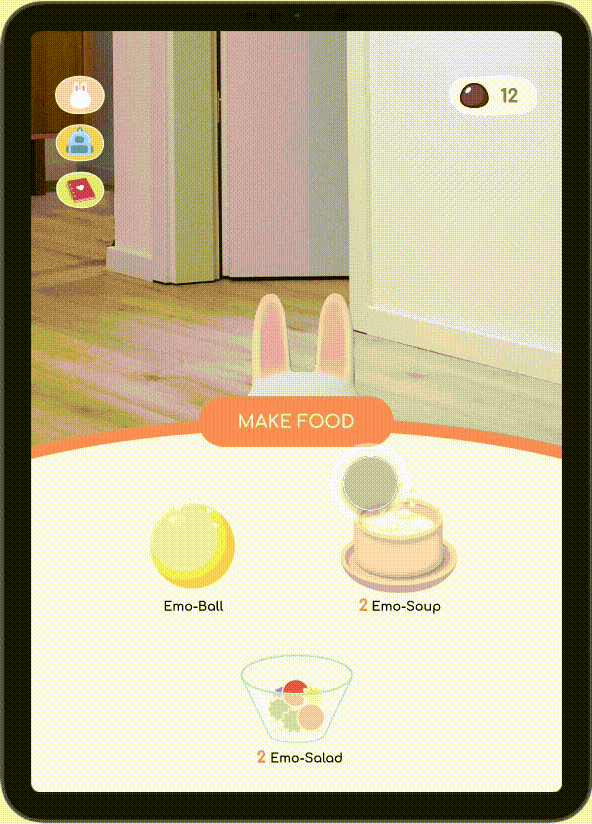
Emo-salad Emo-salad promotes non-judgmental analysis of emotions. Name and tag your emotions to explore underlying causes and develop effective strategies. Aligned with therapist techniques and social emotional learning.
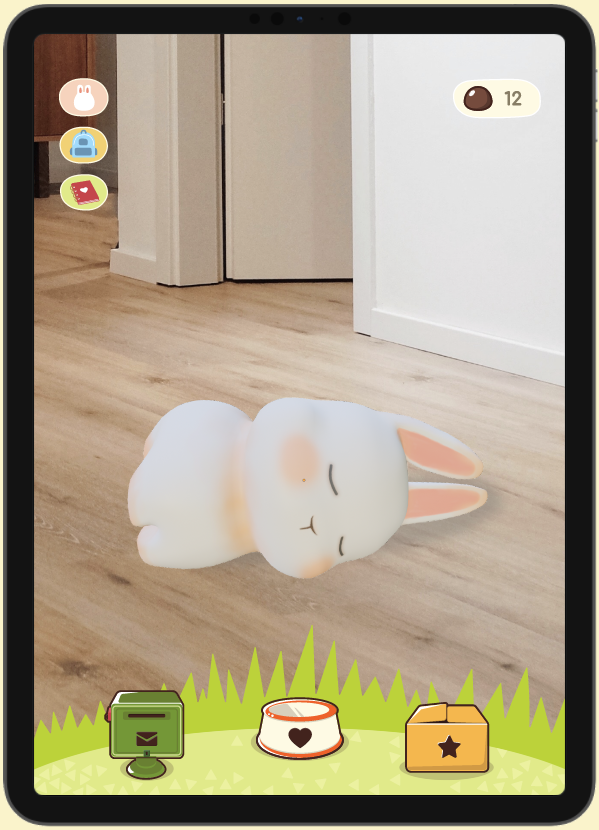
When you forget to feed If you forget to feed your bunny for more than three days, it goes into a dormant state. Feeding it for three consecutive days will reactivate it, but don't worry, the bunny won't die. Ensuring a positive and uplifting experience is important in my game.
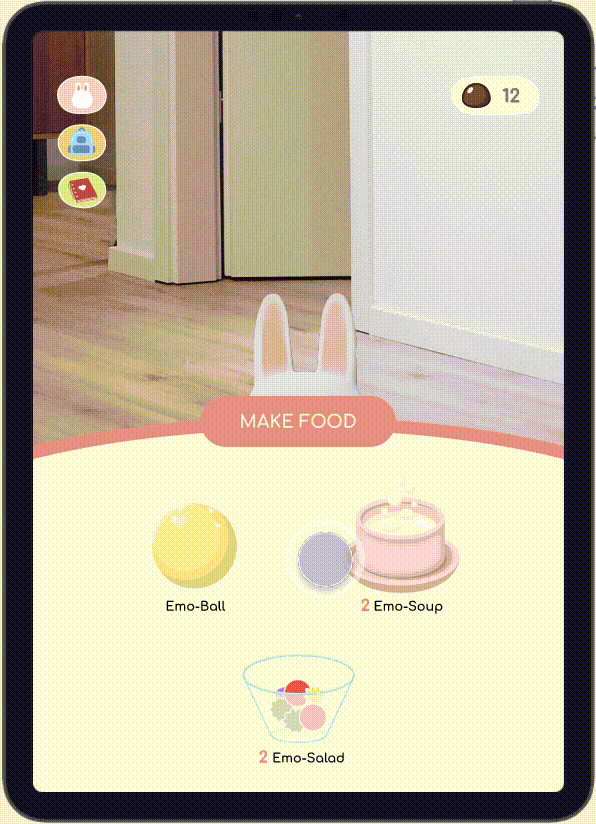
Raw food materials Raw food materials are required to make most food, except for the Emo-ball. They serve two main purposes: 1. Support different input preferences – Unlocking new feeding panels through raw materials lets players choose how they record emotions, based on their habits. 2. Maintain game balance – As consumable items, they keep the game loop active. Without them, collecting Emo-Chocolates would lose purpose once the shop is fully unlocked. The current version includes 3 types of raw materials, with more planned in future updates.
Currency System
Feeding emotions to the Bunny—who then turns them into Emo-Chocolate—starts the game loop. This playful act helps players externalize their feelings, making it easier to acknowledge and express emotions in a light, judgment-free way.
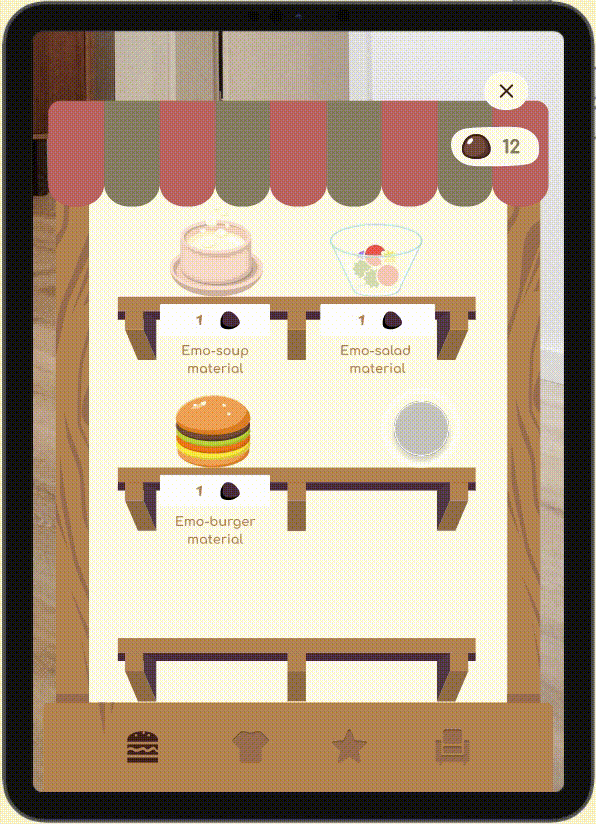
Purchase props Besides raw food materials, players can utilize emo-chocolates to purchase props in the other three categories: articles, clothes, and furniture.
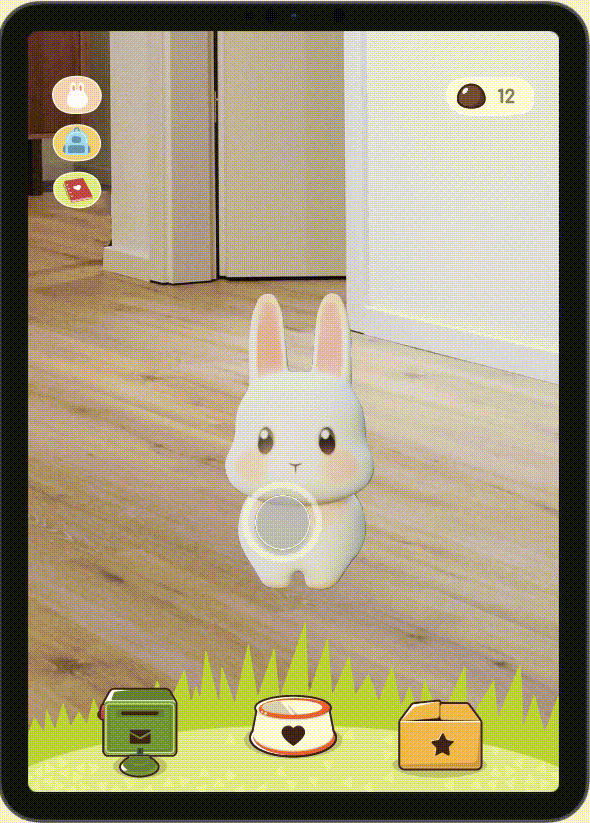
Clothes Players can buy clothes for their bunnies, affecting their destinations. For instance, a swimsuit may bring back emotions from the swimming pool. This adds depth and customization to the game
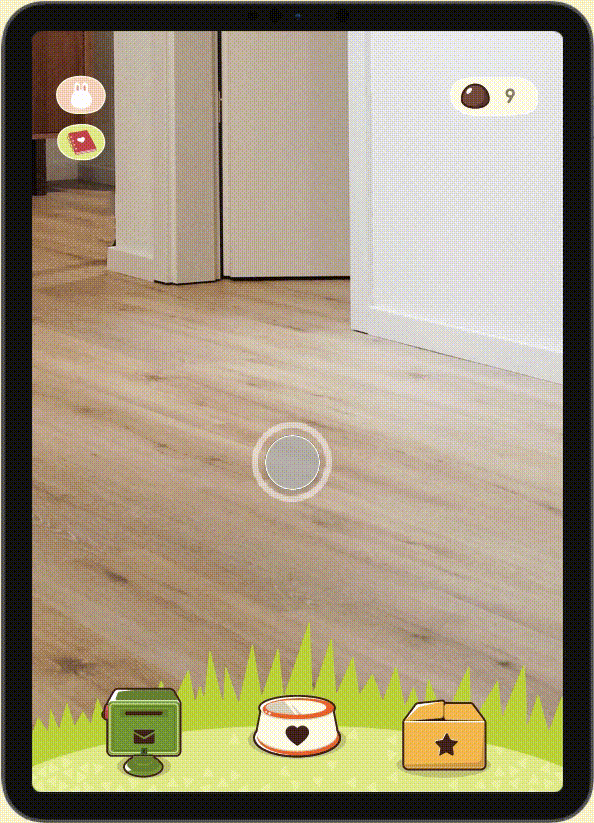
Articles Articles influence the bunny's activity in the emotion fragment. For example, giving the bunny a ticket may result in an emotion fragment depicting it holding the ticket and taking a train.
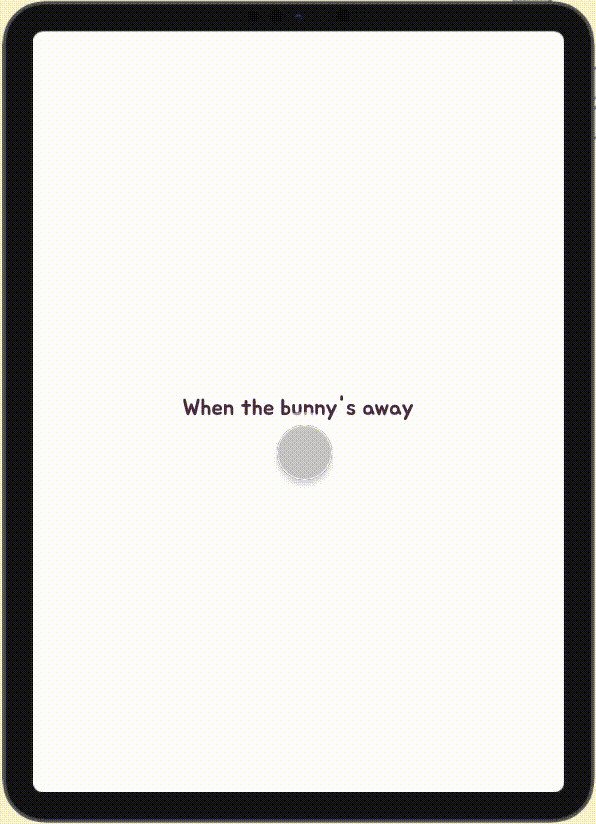
Pack articles When Bunny is away, you can place articles in the room for it to pack upon returning. If Bunny is at home, you can also put articles directly into its backpack.
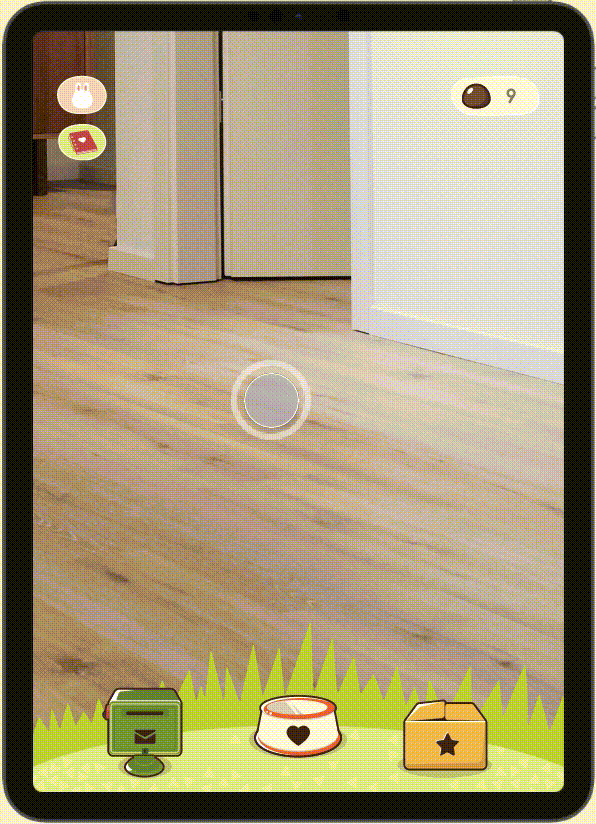
Furniture Integrating features into furniture allows for customization and a richer shopping experience. It also enables the addition of new features in the future..
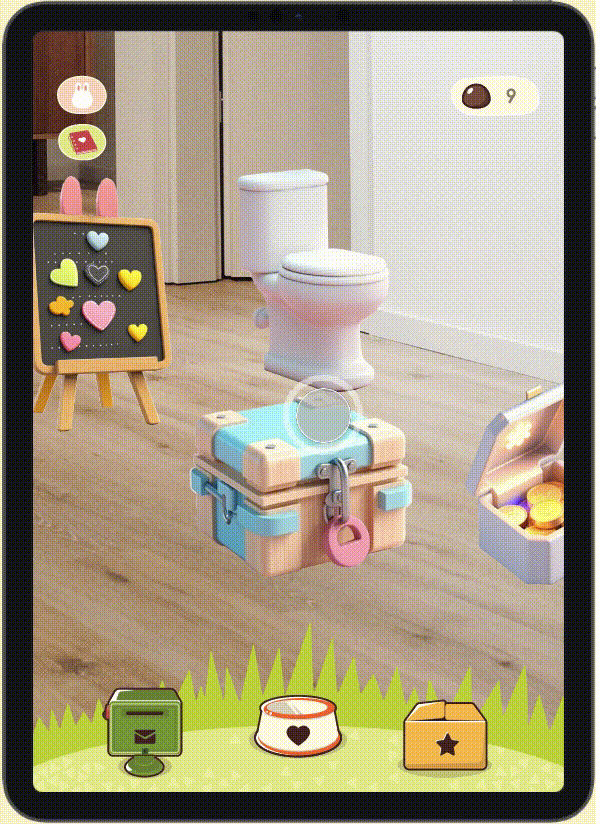
Examples of furniture • Code case: Reserve food for a specific bunny visitor. • Magic box: Sell items Potty: Automatically collect emo-chocolate. • Board: Check feeding records. …… Place furniture in the room and tap to use its functions in an augmented reality (AR) environment.
Comic Content
Influenced by different props, the Bunny sets off on unique journeys and returns with "Emotion fragments" —subtle, everyday feelings it experienced along the way. These emotional fragments invite players to tune into small, often overlooked emotions, enhancing empathy and emotional sensitivity. As a game reward, Emotion Shards complete the gameplay loop, adding both narrative surprise and emotional depth.
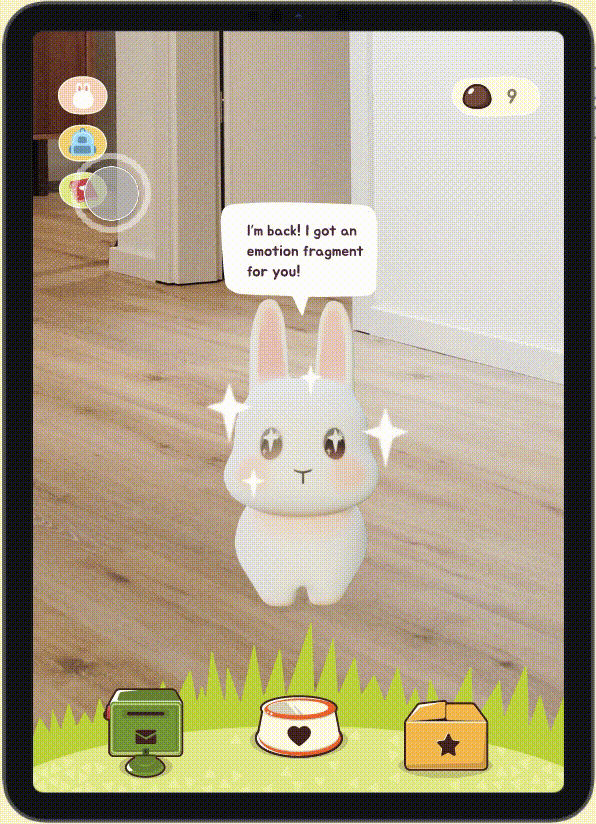
Receive emotion fragments When the bunny back home, it may bring you an emotion fragment. Collect the emotion fragments to compose a manga story that depicts a context-based emotion from the bunny.
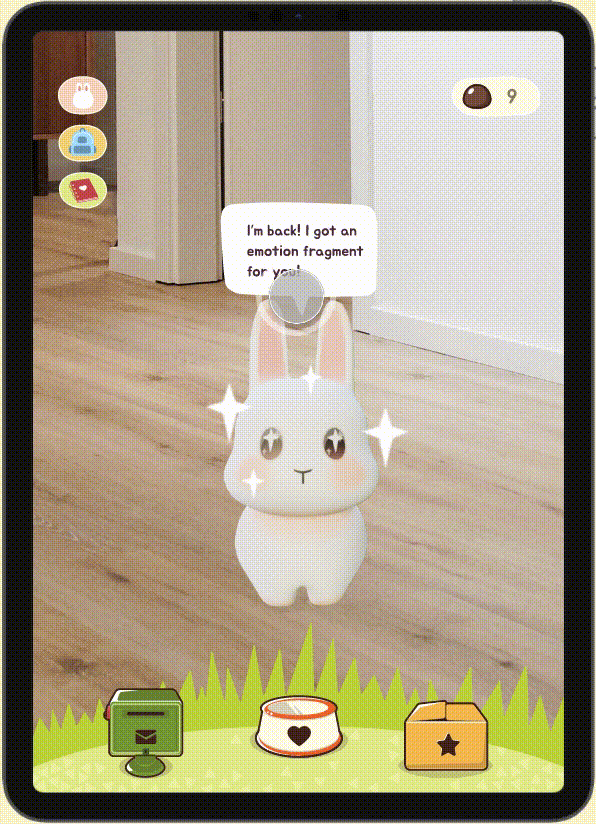
Rate the emotion Once you have completed a manga story, you can rate this emotion based on how often and strong you feel this, from 0~5
Social Features
Social mechanics are introduced to support social-emotional learning (SEL) by encouraging shared recognition and acceptance of emotions, enriching the emotional loop with greater social depth and sustained engagement.
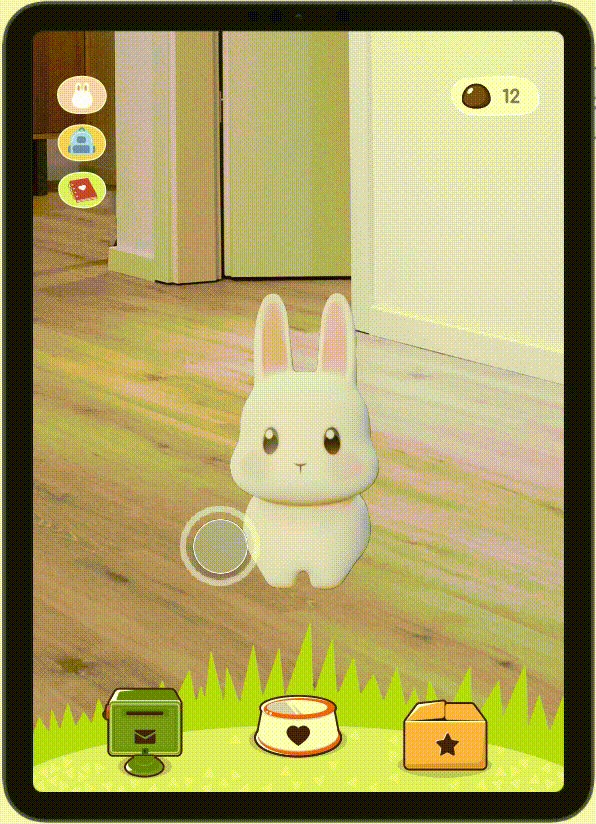
Mailbox Incorporating social features into the final design, the mailbox icon serves as the portal to various social functions.
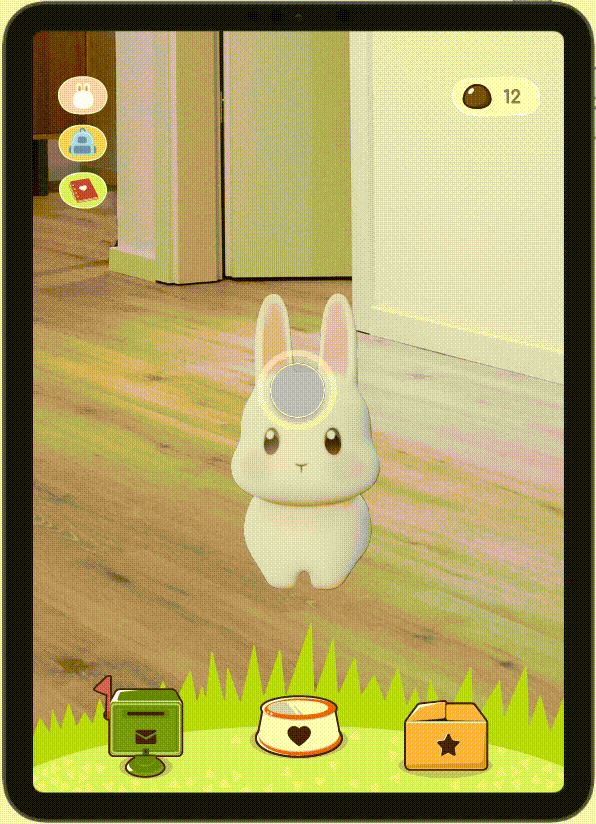
Feel link If you and your friend both rate the same manga with the same score on the same day, triggering the "Feel link", both of you will be rewarded with emo-chocolate.
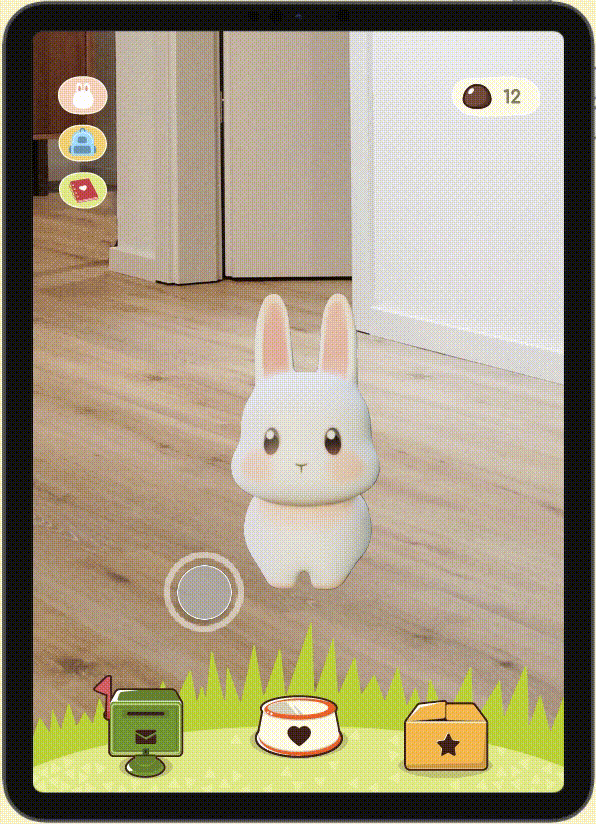
Exchange repeated fragments You will receive emotion fragments from your friends and you can also give yours to them.
[ Gameplay Flow Diagram ]
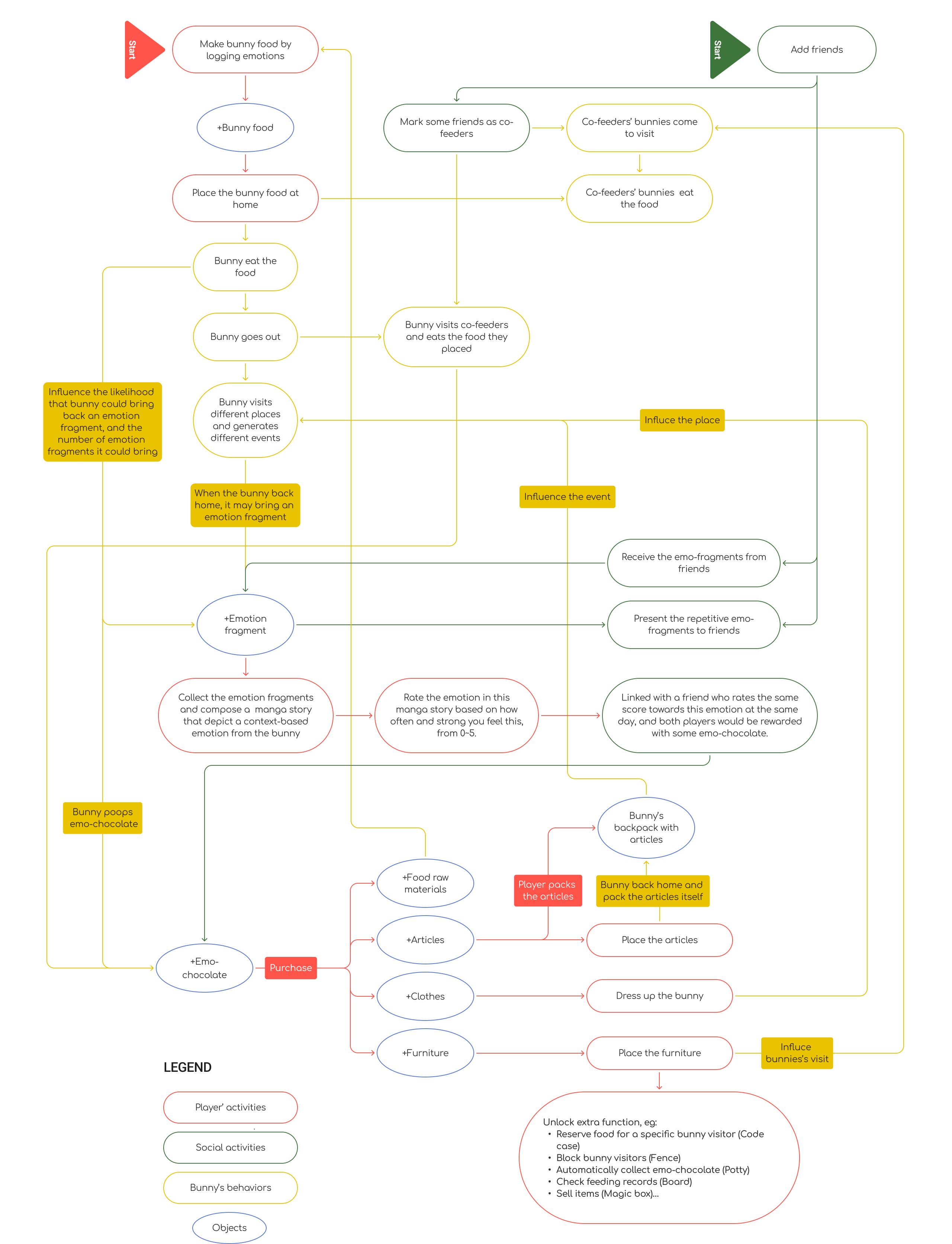
[ Manga Content ]
Bunny’s Emotional Fragments
“Emotion Fragments” are short comics that reveal how the Bunny feels in certain moments. These emotions—often subtle and easily overlooked—reflect everyday experiences that many players can relate to. As the core rewards of Bunny Mood, these stories aim to build emotional awareness in a fun and playful way. They're designed to be lighthearted and engaging, encouraging players to keep collecting and exploring.
[ Narrative Design ]
To make the game feel friendly and intuitive, I designed light, in-character dialogues instead of using traditional tool-like tutorials. Through the Bunny’s voice, players gradually learn how to feed emotions, earn rewards, and unlock stories—without breaking the flow or mood. These conversations help explain the game while keeping it playful and emotionally safe.
